


































JANUARY OF 2024 ushered in a wave of high expectations across Louisiana as the state installed a new governor, insurance commissioner and legislative leadership eager to tackle the deep-rooted issues that have long plagued Louisiana. A new day was dawning. LABI has spent the bulk of the last eight years playing defense against policies that disincentivized business investment and entered the 2024 Legislative Session armed with a fresh perspective and a lengthy list of priorities from our LA Driven agenda that aim to jumpstart Louisiana’s economy, stimulate competition and attract and retain talent.
Our pro-business partners in the House and Senate, driven by a shared vision of progress, were eager to file bills that would have previously been seen as pipe dreams. The lawmakers’ buy-in to LABI’s LA Driven Strategic Plan was not just welcomed but also inspiring. Many representatives and senators—some new to the Capitol—showed incredible support for free enterprise ideals throughout the session, even during difficult votes against a powerful status quo.
As many can attest, the Legislative Session was a sprint filled with its own set of challenges. Unlike in years’ past—when priority bills sat simmering for weeks before being heard—this session saw major pieces of legislation up for de-
bate right out of the gate. I’m proud of the work our team accomplished, from building broad issue coalitions and offering expert opinions at the table in committee, to leading conversations with leadership in both chambers in order to secure support for legislation that would improve our business climate. Our team led the charge every step of the way.
The 2024 Legislative Session was filled with plenty of wins to celebrate. Some of those successes—such as expanding educational freedom—have been sought after by the business community for years. Getting those bills across the finish line was no small feat and should be applauded. Other successes resulted from recommendations from LABI’s LA Driven Strategic Plan. The LABI team led the charge to improve workforce development and delivery, advocating for strategic alignment among government agencies, education institutions and job creators to deliver a trained workforce ready to meet market demands. Some were a response to an insurance affordability and availability crisis: eliminating laws that make Louisiana an outlier and keep insurance carriers from writing policies here.
But even as we celebrate those victories, we must acknowledge some of the priorities blocked by those standing in the way of a more competitive and prosperous Louisiana. The opportunity to bring fairness, transparency and








predictability to our legal system is top of mind. Billboard lawyers have long held court in the Capitol, quashing any effort that would slow down the money pipeline from frivolous lawsuits. Both business owners and Louisiana citizens bear the brunt of this broken legal system that incentivizes legal action over the insurance claims process. This "sue first" mentality is one of the reasons our state boasts the highest insurance rates in the country.
Despite the inevitable challenges, some legislators stood tall against the firm and battle-tested opposition. These lawmakers, from every corner of the state, both newcomers and veterans, showed unwavering conviction and leadership when it mattered the most. We must recognize and appreciate those who advocated for our businesses—large and small—day in and day out. That’s why we made a concerted effort to highlight these lawmakers by name as often as possible in our daily session newsletters, to show that we see their commitment and dedication to building a better Louisiana for the future.
As it’s done for decades, this year’s Legislative Scorecard (see page 65) shines a spotlight on the most consequential issues for the business community and the lawmakers who championed them. There were 27 key votes scored in the 2024 edition—issues highlighted by our members through their input on our issue councils and in our Program of Work that guides our advocacy efforts. The pieces of legislation noted in this publication reflect those that matter the most to the thousands of diverse job creators that comprise our membership. As always, it’s a reckoning of which legislators supported pro-business legislation, bucked the status quo and promoted policies for growth. It also serves as a thorough guide to a very new, very different, and very inspiring body of lawmakers elected last year’s election cycle.
But our work is not done. With the Legislative Session behind us, it’s time to look ahead. As we approach a critical tax session next year the work on fiscal reform is well underway. LABI looks forward to continuing the conversations on how to simplify our tax code to improve competitiveness. We encourage
our legislative champions to keep striving for innovative ways to stimulate economic opportunity, cut unnecessary red tape, give families choices regarding education, and close Louisiana’s infamous revolving door of recidivism.
The work will not be easy, but it is necessary to catch up to and eventually surpass our neighbors across the South to become a state that attracts, invests in and retains industry leaders and talent. Louisiana has far too many resources to be watching from the sidelines as other states reap the benefits of economic growth. Louisiana can take the lead if our leaders take the initiative and continue to prioritize policies that truly move the needle for our citizens.
In addition to LABI’s legislative scorecard, this issue of 5th & Main magazine features compelling stories of individuals and companies making an impact in their communities and, ultimately, in our state. From education initiatives to groundbreaking economic development operations, these endeavors are sure to inspire. We have a history worth celebrating in Louisiana and a future worth fighting for. Join LABI as we lead the charge into a brighter tomorrow.

EXECUTIVE EDITOR
Ashley Gordon
PRODUCTION/DESIGN
Mariah Hernandez, Kenli Lacassagne, Jessica Andry, Caroline Blakley
CONTRIBUTING EDITOR
Kelli Bozeman
CONTRIBUTING WRITERS
Ava Borksey, Marie Centanni, Mariah Hernandez, Mary Beth Hughes, Gary Perilloux, Johnston von Springer
CONTRIBUTING PHOTOGRAPHER
Jeannie Frey Rhodes, Collin Richie
President & CEO
Will Green
Communications
Senior VP of Marketing & Strategic Communications:
Ashley Gordon
Director of Policy Communications:
Mariah Hernandez
Communications Manager: Johnston von Springer
Graphic Design Manager: Jessica Andry
Events Manager: Taylor Andrus
Membership
VP of Membership Relations: Elena Lacour
Membership Relations Assistant: McKenna Ramsey
Policy
Senior VP of Government Relations: Jim Patterson
General Counsel & VP of Government Relations: Lauren Hadden
Director of Government Relations: Mary Beth Hughs
DGovernment Relations Coordinator: Carly Watts
Administration
VP of Finance & Administration: Wanda Allphin
Director of Financial Operations: Tabitha Guidry
IT Director: Andre Forbes
Front Desk Manager: Sheila Saniford
Executive Assistant: Madison Lemoine


Stay prepared for life’s unexpected turns with full-service insurance that protects every part of your journey. Our team handles your insurance as if it were our own so that you can move forward with certainty as you carve your path in life. We’ve served our communities with integrity, compassion and experience for generations, and we look forward to helping you protect what matters.

HOW CAN A SIMPLE strand of flexible fiber transform a town? When it’s an optical fiber like the ones on this page, that thin filament can be woven into the fabric of the future. Just ask the city of Monroe, which in August announced that it will become the first city in Louisiana to provide fiber internet access to all its citizens. The bold move to develop a comprehensive broadband network comes through a publicprivate partnership with AT&T. “Approaches like this, where the public sector and private sector come together, are critical to removing barriers to connectivity,” said AT&T Louisiana president David Aubrey at the time of the announcement. Added Monroe Mayor Friday Ellis, “This initiative is not just about faster internet; it’s about creating opportunities for all.”
But Monroe isn’t the only place where sparks are flying and major impacts are being made by Louisiana businesses. Examples of the profound payoffs of corporate investment are highlighted throughout the following pages. Here’s to a brighter future together!
by Kelli Bozeman
When Yankees first baseman Anthony Rizzo hit his 300th home run in April of this year, he was swinging a Marucci bat. So was Alex Bregman when he helped the Astros to their 2022 World Series trophy, and Freddie Freeman when he logged a .331 batting average last season. And when Adolis Garcia hit a walk-off homer to give the Rangers the win in Game 1 of the 2023 World Series, he did it with a bat by Victus, another popular bat brand that’s part of the MARUCCI SPORTS family.
In fact, Marucci and Victus bats are the two most-used brands among professional American players. Combined, the two brands were swung by 46% of Major League Baseball starting players in 2023, according to What Pros Wear’s annual MLB hitting report. So it was a match made in hitters’ heaven when Marucci Sports announced in June that it has forged a license agreement with Major League Baseball for the Marucci and Victus brands to exclusively be the Official Bats of MLB.
Running from 2025 through 2028, the license also gives Marucci exclusive rights to use MLB trademarks for its Smart Bat products, which feature embedded Diamond Kinetics bat sensors.
“This agreement with MLB exemplifies the leadership position of Marucci and Victus brands as the premier bat choices worldwide, as they are the top two mostused bats among MLB players and have long been part of the MLB landscape,” noted officials with Fox Factory Holding Corp. in a statement announcing the license agreement. Marucci Sports is a wholly owned subsidiary of Fox Factory, having been purchased by the holding company in 2023.
Much like a Bregman bomb over the left field wall of Minute Maid Park, this news marks quite an exciting trajectory for Marucci Sports, which got its humble start in Baton Rouge. The legend is well

known by now: LSU athletic trainer Jack Marucci built his first bat for his son in 2002 and continued the craft as a hobby until joining forces with professional players and fellow south Louisianans Kurt Ainsworth and Joe Lawrence. Ainsworth now serves as the company’s CEO, and his intimate knowledge of the game helped hone Marucci Sports’ focus by partnering with players in the bat design process.
Marucci’s Smart Bats are among the firm’s most innovative new products. These high-tech hitters use sensors fitted into each bat’s knob to measure swings with 11 key metrics in the categories of power, speed, quickness and control. The results are revealed on a mobile app, allowing for real-time adjustments.
But bats aren’t the only product in the
Marucci Sports portfolio. About 45 percent of the company’s revenue comes from other items, Ainsworth told the Greater Baton Rouge Business Report earlier this year. That includes Lizard Skins bat grips, which are currently the Official Bat Grip of MLB. The Lizard Skins brand started with grips for mountain bikes, but its Durasoft Polymer technology later led it to become the leading grip in baseball. Marucci Sports acquired Lizard Skins in 2021, building on Marucci’s commitment to offer top equipment to players at all levels.
“I remember when they first started,” retired MLB player and 11-time All Star Albert Pujols reflected on his long relationship with Marucci Sports in a company video. “I started swinging; I loved it. The rest was history.”

The city of New Orleans was abuzz in early August when President Joe Biden made an appearance on the TULANE UNIVERSITY campus to announce a multi-milliondollar grant to the school to advance its efforts to fight cancer. Up to $22.9 million will be awarded from the Advanced Research Projects Agency for Health, which was established by the federal government in 2022. Tulane will use the funds, allocated as part of Biden’s Cancer Moonshot initiative, to create a machine-learning-assisted imaging system that can identify tiny remnants of cancer during a surgery. “It’s a promising step to reduce the need for follow-up surgeries and improve treatments,” Biden said. “We’re moving quickly because we know all families touched by cancer are on a race against time.”

Joe Spell of Lafayette-based TIDES MEDICAL has been selected as one of Ernst & Young’s Entrepreneurs of the Year for the Gulf South region. The award program recognizes leaders of highgrowth companies aimed at creating “a more equitable, sustainable and prosperous world for future generations,” according to ERNST & YOUNG
Tides Medical uses amniotic tissue to create advanced skin substitutes for use in wound care. The Tides Medical Foundation also supports local nonprofits in the areas of education, medical research and community development.
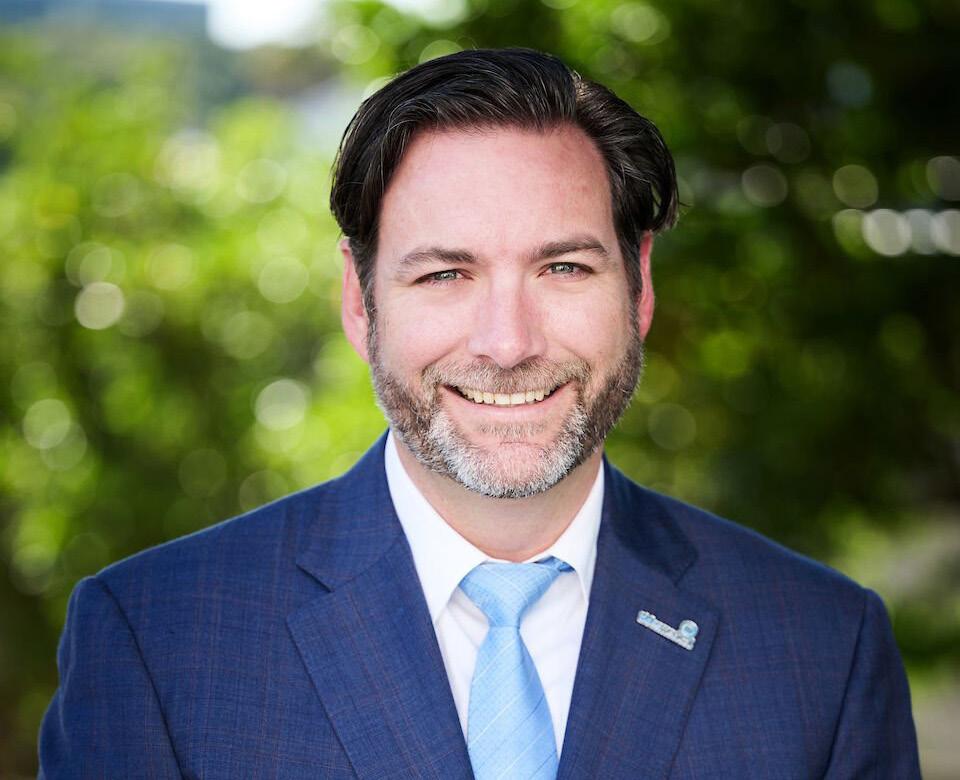
Future mariners are getting a sense of what it’s like to be on the bridge without leaving dry land, thanks to HORNBECK OFFSHORE’s new Dynamic Positioning simulator. The Wärtsilä NaviTrainer Professional 6 Offshore Simulator offers an immersive and interactive training experience and can mimic multiple DP systems and vessel classes. Housed at the company’s Covington headquarters, the simulator is capable of giving trainees the feel of a realistic failure situation but in a controlled atmosphere that increases efficiency, minimizes cost, and eliminates risk. Hornbeck also recently announced that the U.S. Department of the Navy Office of Small Business Programs has approved a Mentor Protégé Agreement between the company and Next Generation Logistics. Already longtime partners, the two will work to provide tailored solutions in support of the U.S. government.

For most Louisianans, the word “gumbo” simply signifies a hearty homecooked meal. But the state’s Granting Unserved Municipalities Broadband Opportunities program—aka “GUMBO”—is giving new meaning to one of our favorite words, while providing high-tech possibilities for more Louisiana citizens than ever before. Designed to help private providers facilitate broadband service deployment in unserved areas, the program awarded more than $170 million in its first round of grants. For West Monroe-based ETHERIDGE PIPELINE & CONDUIT, GUMBO also means the company brought in nearly double its 2023 total revenue in just the first seven months of 2024. “With that growth, we have created approximately 60 new jobs in skilled trades from equipment operators to aerial linemen and splicers,” says CEO Caleb Etheridge. EPC is also expanding its footprint and service offerings in the broadband and telecommunications industry, expanding into six additional states and adding Distributed Antenna Systems and RF tower deployment to its offerings. “This growth allows us to bring our expertise in broadband network construction to a wider audience,” Etheridge says, “ensuring that more communities can benefit from enhanced connectivity.”

When Trafigura commodities group successfully completed its first ship-to-ship transfer of ammonia in the Strait of Gibraltar in July, it did so with 6,000 metric tons of ammonia supplied by CF INDUSTRIES from its Donaldsonville manufacturing facility. The gas was safely transferred from the Green Power medium gas carrier to the Gas Aegean small gas carrier and will be used for the production of fertilizer. Until recently, ship-to-ship transfers have not been widely used by the ammonia industry, though they are commonly used to load other commodities onto more suitable vessels for delivery to a destination. “[This] demonstrates the feasibility of ammonia bunkering in the future,” said Trafigura head of wet freight Andrea Olivi, “as demand grows for the hydrogen-based low carbon fuels that will enable the shipping industry to decarbonize.”




A 76-acre industrial plot on Almonaster Avenue in New Orleans has become the city’s first Certified Site, as designated by Louisiana Economic Development. ENTERGY NEW ORLEANS and the CSX Corporation made the announcement in August, noting that the certification means the CSX-owned site is developmentready. The LED Certified Sites program qualifies both business and industrial sites for use through the use of environmental studies, soil analysis, surveys and other rigorous reviews. The goal is to make location decisions easier for developers with tight timeframes and concerns about risks. Working with CSX, Entergy identified the site, facilitated the certification process, and served as a liaison among stakeholders.
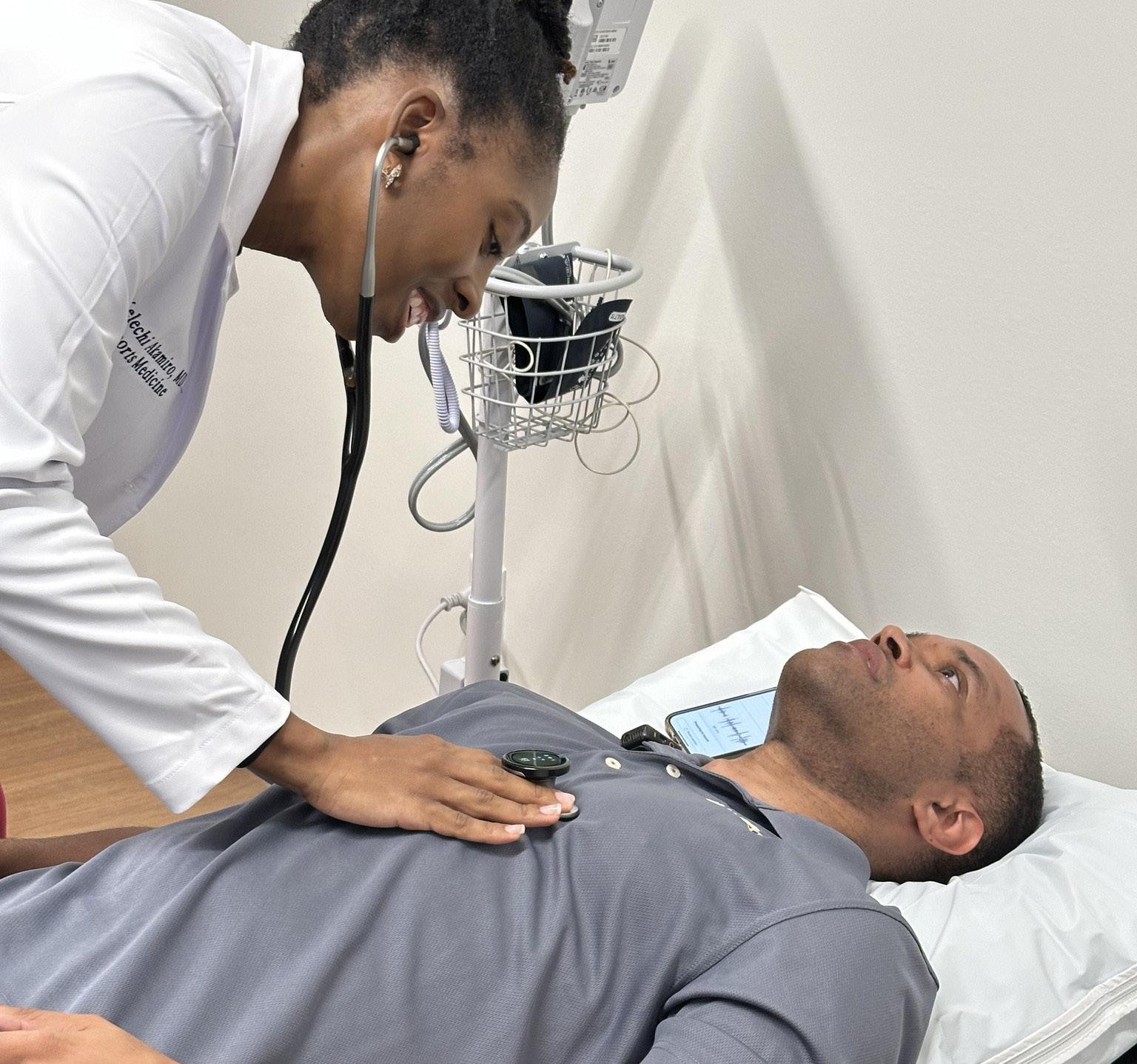
KENWORTH OF LOUISIANA is now hiring for its soon-to-open eighth dealership location in Hammond. Jodie Teuton and her husband Scott Oliphant are dealer principals for the company; they purchased the Kenworth truck franchise in 2004 and today employ more than 380 people.
New Orleans-based PHELPS DUNBAR will merge with Memphis-based Farris Bobango to create one of the South’s largest law firms. The new entity will employ approximately 400 attorneys and will retain the Phelps Dunbar name. The firm will have offices in 14 cities.
The Lowe’s Foundation has awarded an $850,000 Gable Grant to BATON ROUGE COMMUNITY COLLEGE. The investment will be used to establish a new plumbing training program and to create a Construction Trades Outdoor Learning Lab.
Construction, manufacturing and fabrication firm RNGD will consolidate its Southeast Region manufacturing operations, training and corporate headquarters on an 8-acre campus. The project, which is expected to be completed by January 2025, will include a 30,000-square-foot office building, a 25,000-square-foot training center and an expanded 80,000-square-foot manufacturing facility.
OUR LADY OF THE LAKE HEALTH is taking a team approach to studentathlete health by joining forces with LSU Athletics and Eko Health to employ digital stethoscopes that may more accurately identify heart conditions. LSU’s sports medicine team, consisting of providers from OLOL, will use Eko’s FDAcleared CORE 500 digital stethoscopes and its related software program that features AI algorithms for detecting atrial fibrillation and heart murmurs. LSU Athletics is the first college sports program to use these devices. “Early detection of arrhythmias and murmurs is incredibly important for everyone—but especially LSU student-athletes who are constantly pushing their bodies to perform at a high level,” says OLOL Health sports medicine physician Kelechi Akamiro. “These new digital technologies have the propensity to assist us in detecting irregularities or problems with even greater precision.”

The 2024 installment of BASF’s Tech Academy brought together 27 south Louisiana high school students to learn about technical and craft careers by conducting experiments, meeting industry professionals, and participating in other hands-on activities. The free weeklong academy was based at River Parishes Community College and included field trips to BASF’s Geismar site, the Port of South Louisiana, Triad Electric and Controls, Ascension Welding and Fabrication, and NASA’s Stennis Space Center. “This is a great opportunity for high school students to connect and learn about emerging technologies and career opportunities,” said RPCC chancellor Quintin Taylor. “Having students on campus learning and sharing information from professionals in the field while engaging with our faculty provided a real-time glimpse into the careers that await them.”
Conveyor belts are humming at AMAZON’s BTR1 fulfillment center. The company’s first robotics fulfillment center in Louisiana opened in Baton Rouge in June at the location of the former Cortana Mall. Yet even with all of the automation the 3.4-million-square-foot facility employs, it will also have more than 1,000 full-time jobs, according to the Baton Rouge Area Chamber. “The facility is a major economic win for the Capital Region,” BRAC leaders said in a Facebook post announcing the opening. “Announcements like these directly align with BRAC’s strategic plan goal of diversifying the region’s industry base, and citywide efforts to develop the Florida and Cortana corridors.”


RED RIVER BANCSHARES INC. has been ranked ninth in a list of the nation’s Top 30 Publicly Traded Banks Under $5 Billion, as reported by Bank Director magazine. The magazine determined the rankings through its 2024 RankingBanking report. Red River Bancshares is the only Louisiana-based bank on the list, which evaluated banks using S&P Global Mark Intelligence Data and considered the prior year’s profitability, capital adequacy and asset quality. Established in Alexandria in 1999, Red River Bank now operates from a network of 28 banking centers throughout the state and a combined loan and deposit production office in New Orleans. “Our success really falls back on the mission of our company, ‘Building relationships by putting people first and exceeding expectations every day,’” said Red River Bancshares president and CEO Blake Chatelain.

Whole-family healthcare provider Nest Health of New Orleans is the first recipient of an investment by the Ochsner Louisiana Innovation Fund, which launched in July. The fund, a partnership between OCHSNER HEALTH and LED, was created to support innovative early-stage Louisiana companies in the health arena. Nest Health was co-founded by former Louisiana Secretary of Health Rebekah Gee (pictured) and former Landmark Health president Rebecca Kavoussi. The firm provides parents and children with comprehensive care through house calls, virtual care and 24/7 support, and its services are accessible by Medicaid-covered families in the New Orleans area.

SEPTEMBER 12 - CAPITAL REGION
RALLY CAP BREWERY • BATON ROUGE
SEPTEMBER 17 - ACADIANA REGION
UL STADIUM CLUB • LAFAYETTE
SEPTEMBER 18 - NORTHSHORE
SOUTHERN HOTEL • COVINGTON
SEPTEMBER 19 - BAYOU REGION DANOS • GRAY
SEPTEMBER 23 - NORTHEAST REGION FLYING TIGER BREWERY • MONROE
SEPTEMBER 24 - NORTHWEST REGION CYBER INNOVATION CENTER • BOSSIER CITY
SEPTEMBER 25 - GREATER NEW ORLEANS URBAN SOUTH BREWERY • NEW ORLEANS
SEPTEMBER 26 - SOUTHWEST REGION CRYING EAGLE BREWERY • LAKE CHARLES
Join LABI as we launch a statewide event sweep in the month of September, hosting our new Regional Rallies for members and friends. After the workday is done, join us to grab a drink and some grub and meet up with other local LABI members, invite prospective members, and learn more about our plans for the rest of 2024 and beyond. In addition, local legislators who supported LABI-endorsed bills will get a shout-out (and a Marucci bat) for scoring well on the LABI Scorecard. The new LABI Regional Rallies are sure to knock it out of the park in every part of Louisiana!
ELC’s Melanie Clouatre believes strongly in giving back
BY MARY BETH HUGHES
TEN YEARS AGO, if you told Melanie Clouatre she would be the financial head of a major Louisiana company, involved in numerous community boards and the newest chair of LABI’s Emerging Leaders Council, she wouldn’t have believed you.
“In a million years I never thought I would be where I am now,” says Clouatre. “When I started out, I was never interested in business, and certainly didn’t think I would climb the corporate ladder this fast.”
Clouatre began her career as a high school math teacher at St. Joseph’s Academy in Baton Rouge. But after three years, she returned to college and ultimately
became a CPA, working at a number of Baton Rouge firms and companies before landing a job at Placid Refining Company, where she now serves as Treasurer. There, Clouatre oversees accounting, treasury and credit for the entire company. But she didn’t just gain a job at Placid; she found an industry guide in former Placid Government Relations Director Tyler Gray, who now serves as Louisiana’s Secretary of Energy and Natural Resources.
“Tyler was a great mentor to me,” says Clouatre. “He taught me the valuable lesson that when business gives to the community, the community gives back.”


Clouatre is paying it forward by serving as LABI’s chair for the Emerging Leaders Council.
“We have young entrepreneurs who are hungry to grow their business, and I hope to guide them like someone guided me,” says Clouatre. “I’ve seen firsthand that when businesses invest in their communities by attracting talent, strengthening local economies and paying it forward, Louisiana will thrive.”

BY JOHNSTON VON SPRINGER
LABI board members share the ways their companies make an impact on Louisiana communities.
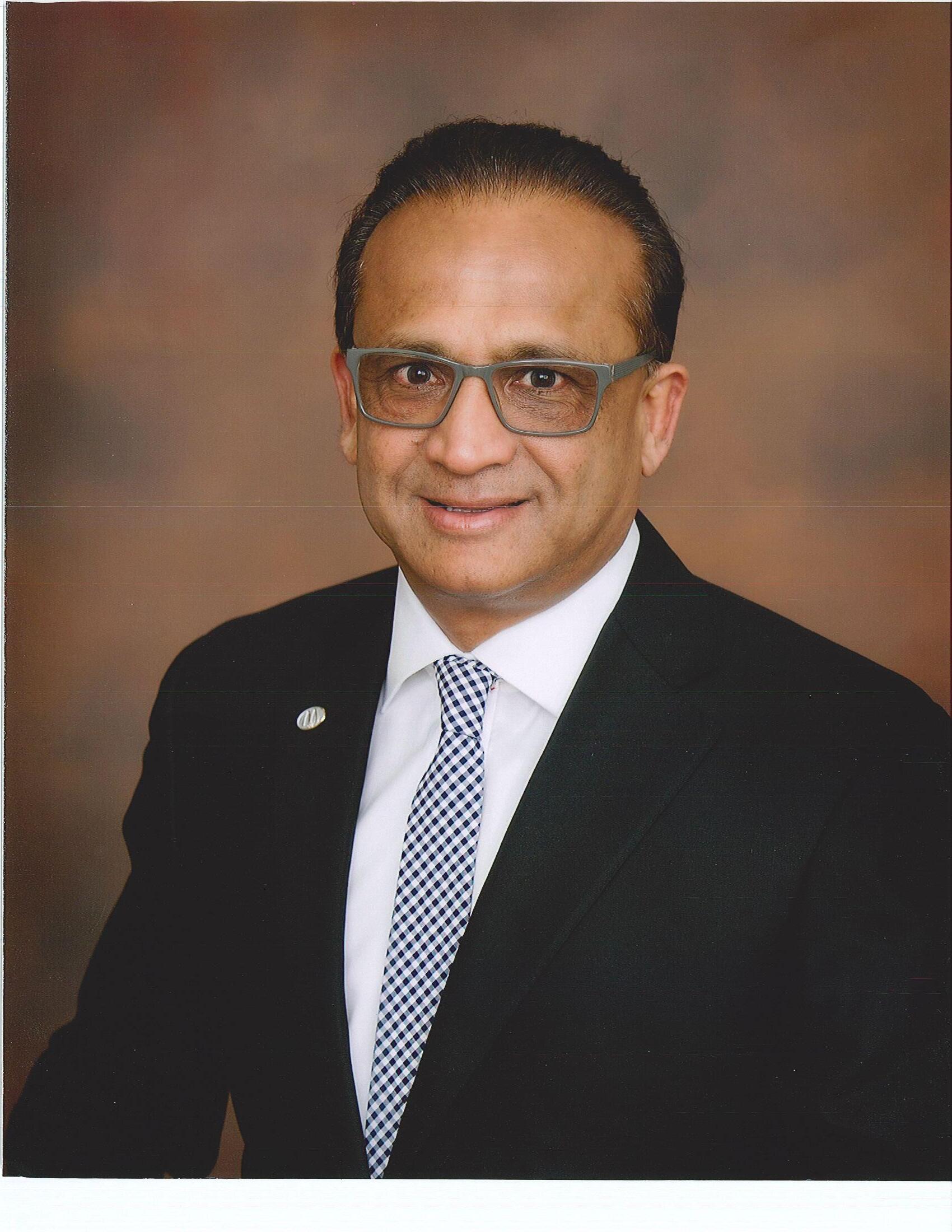
“As local McDonald’s franchisees, we recognize the importance of contributing to the communities that support us. Recent initiatives include a $100,000 donation to the new children’s museum, Port Wonder, in Lake Charles and sponsoring area Little League baseball teams amounting to $44,000 annually. We also gave 4,500 biscuits to honor teachers during Teacher Appreciation Week and actively participated in National Night Out events organized by local Police and Sheriff Departments.”
AJAY PATEL
Abnar, Inc. dba McDonalds

O’Nealgas and Hercules Transport put a priority on giving back to our local community. We support MedCamps, a local camp for developmentally challenged children and young adults just four miles from our office building. We are also invested in The Well, a local organization supporting foster care and adoption. Other organizations we support are Adopt-a-School, Junior Auxiliary, St Jude’s, as well as many local athletic teams and youth agriculture and husbandry groups.”
TOM O’NEAL
President, O’Nealgas, Inc.

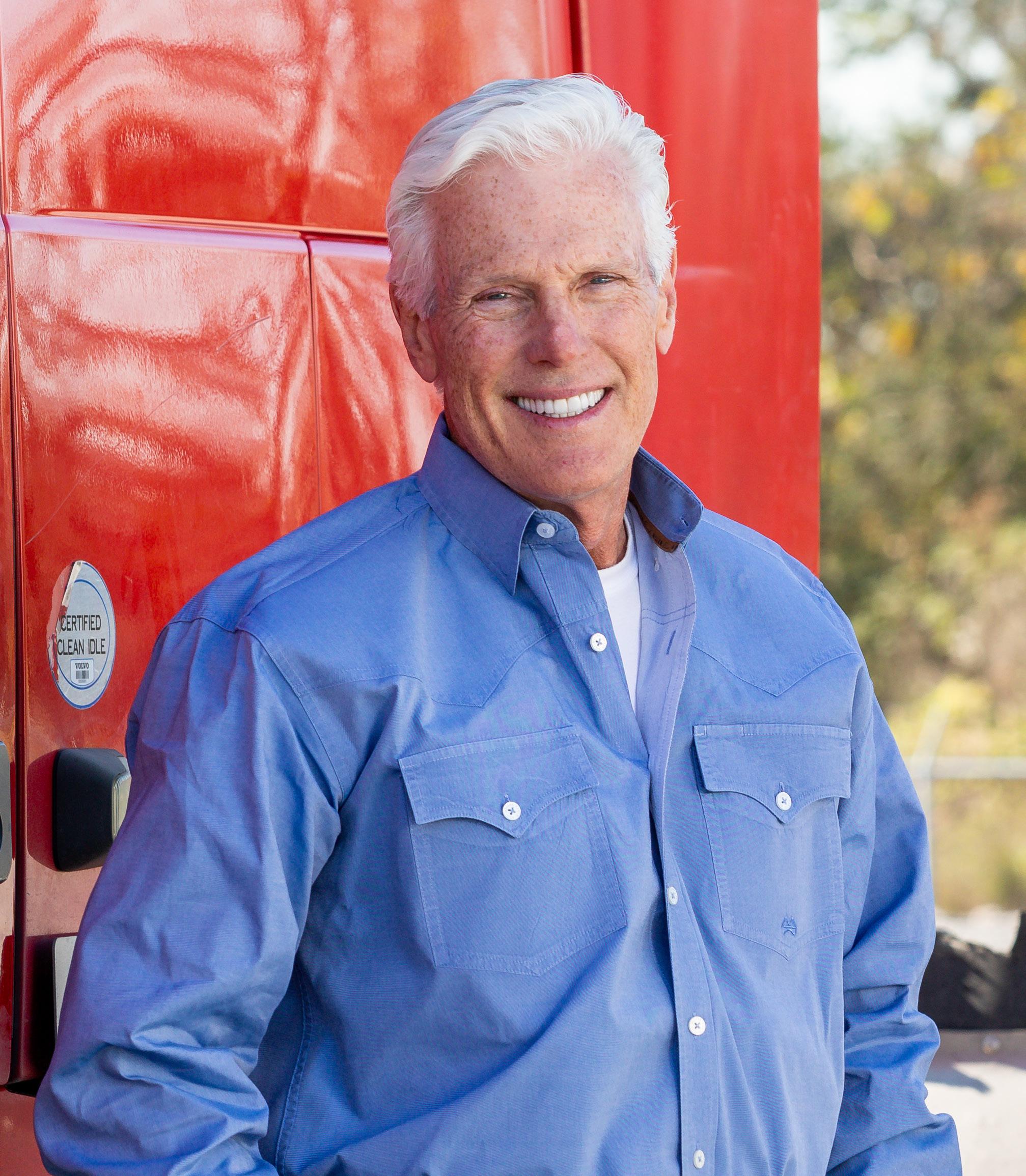
“Simply put, we understand that in order for our business to be successful, our communities must also prosper. Through our corporate social investments, we work to promote peoplecentered, sustainable programs informed by local needs. In Louisiana, we’ve contributed $10 million in recent years toward public elementary school STEM education, scholarships, coastal restoration, small business development and a landmark STEM children’s museum to name a few—implemented in collaboration with the communities where our employees live and work.”
KIM CUSIMANO Director, Global Government & Public Affairs, Sasol
“Taylor Porter has supported our local community for over a century. Whether serving on the board of directors of a nonprofit or making contributions of volunteer time and donations, our attorneys and staff strive to make an impact in Baton Rouge. An example of our commitment to our local community is the enthusiastic approach our employees take when hosting firm-wide fundraisers for community organizations. Whether we ‘Geaux Pink’ or hold a Halloween fundraiser for a local nonprofit, our team is all in.”
BOB BARTON
Managing Partner,
Taylor Porter


“For each of the past six years, Blue Cross and Blue Shield of Louisiana has been recognized by the Points of Light Foundation as one of the 50 most communityminded companies in the nation. This Civic 50 designation is a reflection of the tens of thousands of hours employees volunteer in our communities and the millions of dollars they contribute to their favorite nonprofits every year. At Louisiana Blue, we put Louisiana first.”
BRYAN CAMERLINCK
President/CEO, Blue Cross and Blue Shield of Louisiana


“Every year, Deloitte offices around the globe close up shop and engage in a day of service called Impact Day. This year, dozens of members of the Baton Rouge Deloitte team spent Friday, June 7, supporting Youth Oasis in Baton Rouge, cleaning out space, re-painting doors and entryways, and re-striping the parking lot. Our New Orleans staff volunteered at a variety of sites including Grounds Krewe, Second Harvest Food Bank, and Take Paws Rescue.”
CAMILLE CONAWAY Senior Manager, Deloitte
“At Forth Insurance, we are ALL in with our local communities! From reading at schools to serving nonprofits our employees go over and above with their time and money. I am so proud to be part of an organization that cares so much.”
PEYTON FARR Branch Manager, Forth Insurance
“Annually, I collaborate with the dean of the School of Business at McNeese State University to give a series of lectures on financial literacy to students. It is a well-received program that examines all aspects of debt management and asset accumulation. I also speak to graduates reviewing best practices for job interviews.”
MICHAEL
EASON
Senior Vice President, Merrill Lynch


“Having had the opportunity to work on numerous projects across the US, we’ve participated and engaged with local communities in varying degrees. One of the most rewarding for our crews is working with local schools and offering to help with reading classes. Other opportunities vary from teaming up with various charitable groups and participating in events particularly special to those locations such as community fairs, church drives, and Boys and Girls Clubs.”
BRYAN HANKS President, BETA Land Services

“Crest Industries is deeply committed to community engagement, partnering with over 25 local organizations to support workforce education, youth empowerment, and healthy communities. We sponsor in-school STEM programs, mentorships, local recycling activities, and hands-on outreach opportunities. Recently, we raised significant funds for Wounded War Heroes, supported cancer research with nationwide fundraising, and expanded contributions to early childhood education. Through these efforts, we create lasting change while living our core values in the communities we serve.”
JOHN
DOGGETT
Chief Administrative Officer, Crest Operations, LLC
“Verizon is on a mission to help solve some of the biggest challenges that face the world today. We’re empowering people and communities with free technology and resources so they can get the most out of today’s digital world. We commit to empowering students and educators with new ways of learning, helping 1M small businesses thrive in the digital economy and preparing 500K individuals for jobs in the digital economy.”
TANDRA LEMAY
Government
and External Affairs, Verizon
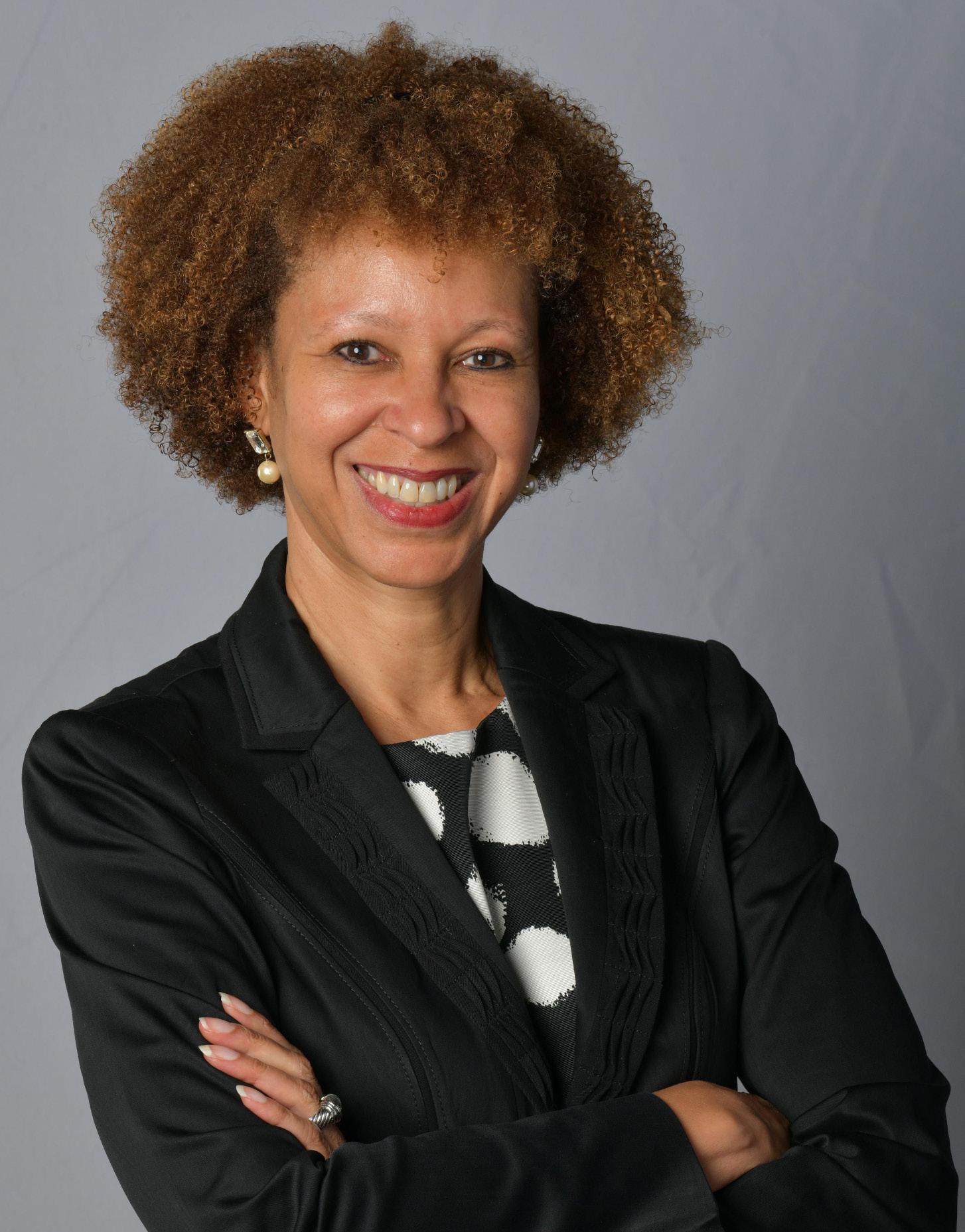

“At Performance Contractors, giving back is central to our mission because we believe in people helping people. In April 2024, we marked our 9th year as the presenting sponsor of the Chippin’ In for St. Jude Golf Tournament, which has raised over $1.5 million for St. Jude Children’s Research Hospital. We support programs in over 80 high schools & colleges, volunteer extensively, & are committed to veterans. Our community efforts reflect our deep commitment to making a positive, lasting impact.”
President,



ART FAVRE
Performance Contractors, Inc.

“Many of our attorneys have served as board members and chairs of the local business councils and chambers of commerce and their foundations as well as for such nonprofit organizations as American Red Cross Southeast Area, Goodwill Industries of Southeastern La., and United Way. We have also taught courses to assist emerging businesses for the Urban League and the Goldman Sachs 10,000 Small Business Program. Creating a better environment for our citizens helps everyone advance.”
FRED
PREIS JR. Senior
Partner,
Breazeale Sachse & Wilson
“Placid is always looking to expand our footprint in the community and it encourages employees to get involved. I serve as the treasurer of the EBR School System Foundation as well as treasurer of the CASA of the 18th JDC. Placid supports our local food bank in Port Allen. We are providing local scholarships for WBR students, sponsoring local school and recreational sports teams, and are very involved with our local chamber of commerce. We know that when business gives locally, the community thrives.”
MELANIE CLOUATRE Treasurer, Placid Refining
Company, LLC
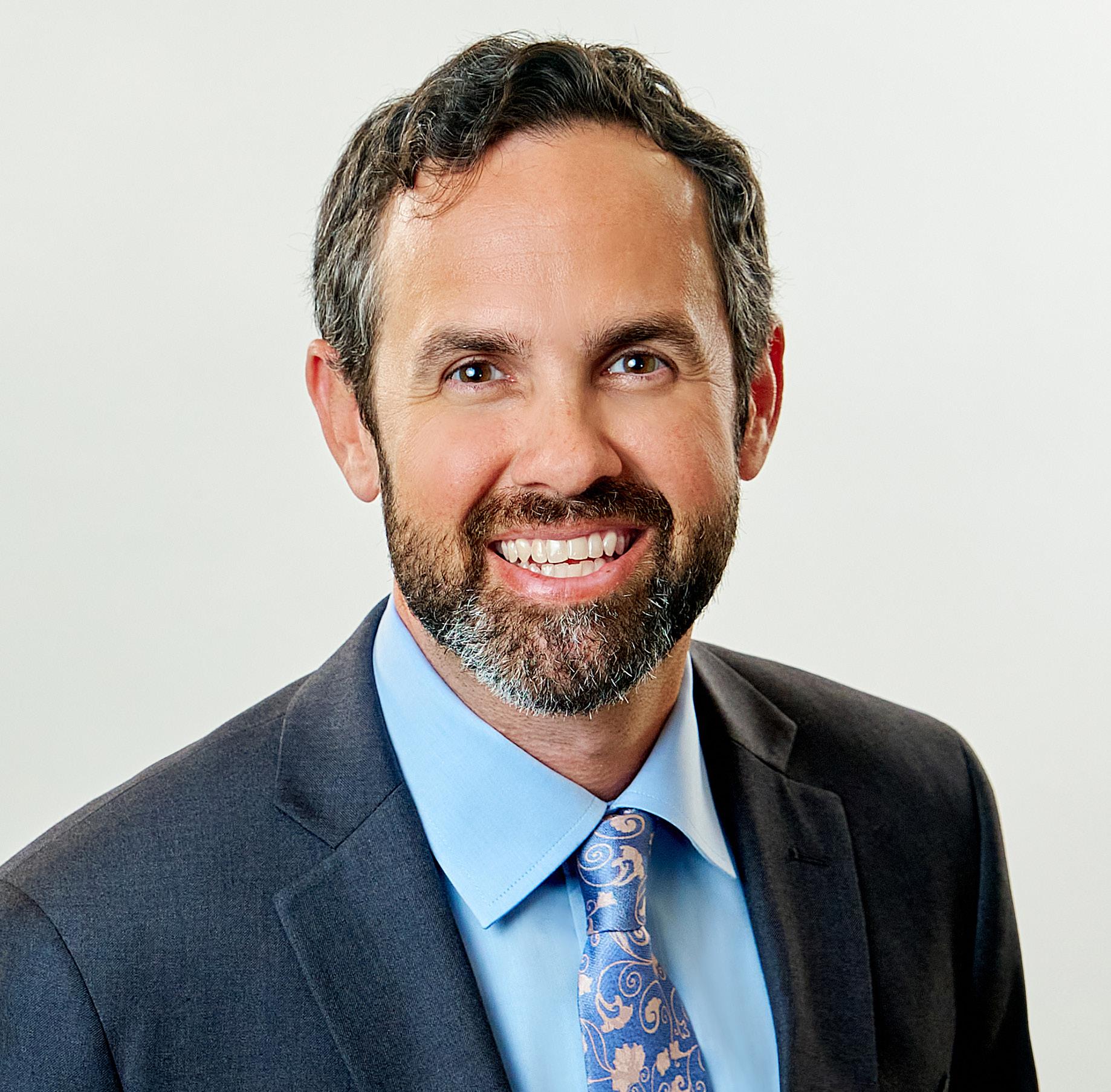
“Barriere has worked with Second Harvest of Greater New Orleans for over 20 years. We’ve also hosted food pickup locations at some of our facilities for residents in Laplace, Boutte and Baton Rouge. We have donated as a company thousands of pounds of food over the years. Our employees and interns have worked with Second Harvest at their New Orleans facility to prepare food for daily meals provided to those in need.”
JASON LATIOLAIS President/CEO, Barriere Construction Co.
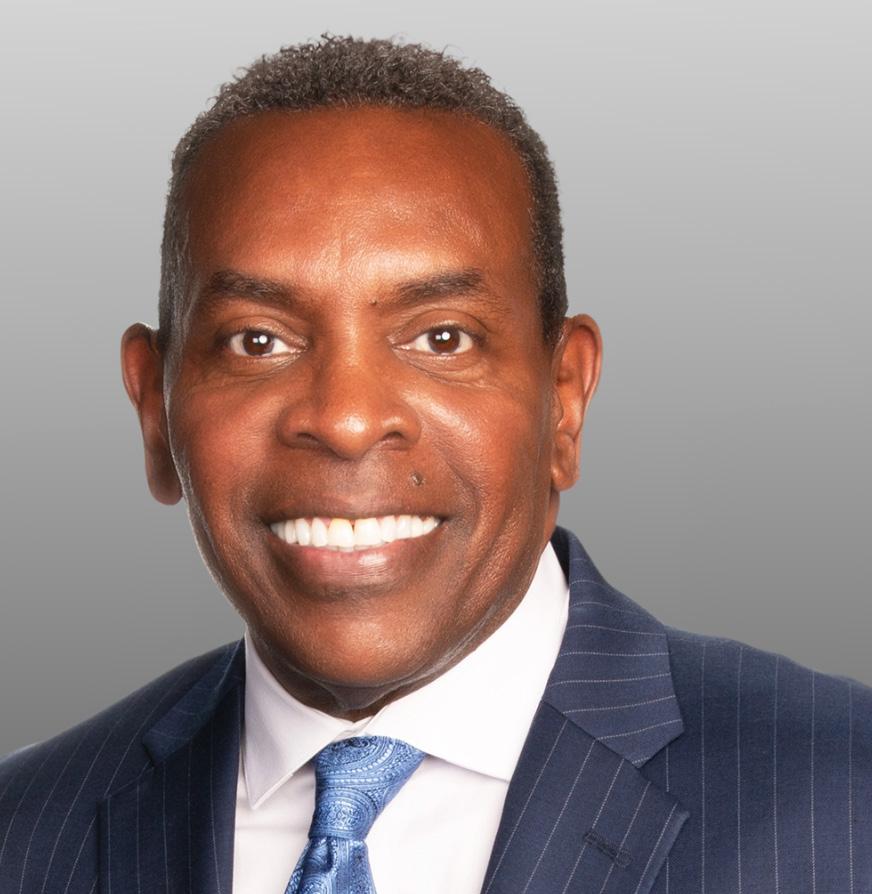
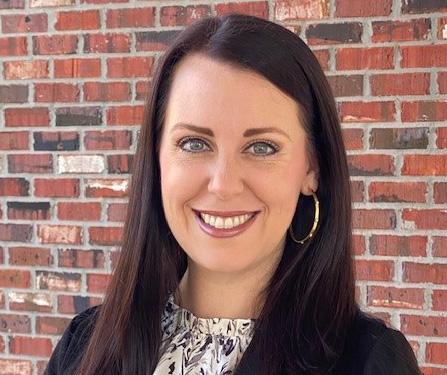
“For over 10 years, Cox has provided low-cost programs like Connect2Compete and ConnectAssist to low-income families to help bridge the digital divide. We also contribute $2.1 million annually with a focus on local organizations supporting youth and education, diversity and environmental issues. We are deeply proud of our Louisiana employees who have dedicated over 350 volunteer hours this year alone to local organizations like the Foundation for East Baton Rouge School System, STEM NOLA, and Boys & Girls Clubs of America.”
ANTHONY POPE Senior Vice President, Cox Communications
“Community involvement is at the heart of Team Advantous. Our dedicated Community Involvement Committee is always on the lookout for new ways to make a meaningful impact. Over the past year, we’ve partnered with incredible organizations like St. Jude Children’s Research Hospital, Habitat for Humanity, Brave Heart Louisiana—Children in Need, and Companion Animal Alliance, volunteering our time and resources to support their missions.”
JASON DECUIR
Partner,
Advantous
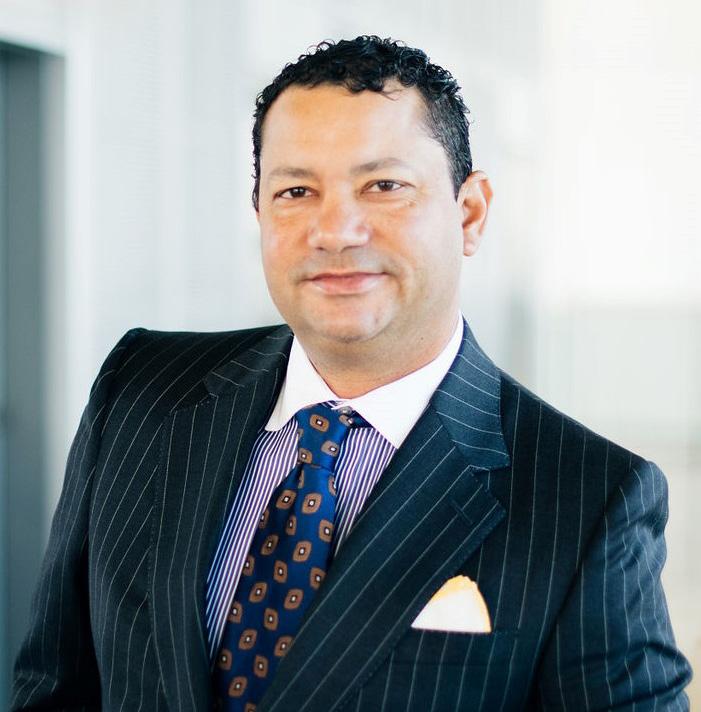

“For 45 years, DonahueFavret’s culture has been deeply rooted in giving back to our local communities. Our employees serve on nonprofits such as American Heart Association, Family Promise, Youth Service Bureau, and Habitat for Humanity’s ‘Women Build’ project many others. Our annual ‘Driving FORE Charity’ golf tournament has raised more than $180,000 for local area nonprofits in just three years. Philanthropy remains a cornerstone of our identity, and we’re proud of the impact it has here at home.”
JOHN
DONAHUE
President/CEO, DonahueFavret Contractors, Inc.
“Nucor Steel Louisiana is dedicated to giving back to our community because we believe in creating a positive impact beyond the workplace. Our commitment stems from a core value of responsibility and service, recognizing that thriving communities contribute to thriving businesses. By supporting local initiatives, such as Salute 1st, Women Empowering Women via Capital Area United Way, and Junior Achievement workshops in schools, we aim to strengthen social bonds and enhance quality of life. Commitment doesn’t just end with local initiatives; it requires investment in the future.”
CALVIN HART Vice President, Nucor Steel Louisiana



“As bankers, we have a front row seat to some of the best and worst financial decisions people contemplate. As such, we focus much of our community engagement on teaching sound financial decision making. We spend very little time teaching math skills—because poor financial decisions typically reside far closer to the heart. Not following the crowd is key to running a resilient financial household/business.”
JOE ZANCO President/CEO, Catalyst Bank
“The proverbial ‘we are all in this together’ rings true in the hearts of Team Gibbs. We enjoy supporting local workforce development efforts such as unCommon Construction, ACE Mentorship Program, BuildStrong Academy of GNO, ABC Bayou Craft Training Center and hosting a robust in-house internship program. We also give annually to local organizations such as SOUL Nola, LCMC Children’s Hospital July Toy Drive, St. Michael’s Special School Mardi Gras Bead Drive, Ochsner Blood Drive and Second Harvest Food Bank.”
LAUREN GIBBS
CEO,
Gibbs Construction
“Given the current condition of the fiscal budgets of the federal, and most state, governments, philanthropy is vital to help nonprofits and other NGOs fill the gap to provide vital human services and assistance to the most needy in our communities. As more services are curtailed by government, nonprofits and NGOs can help supplement the services and other necessities for the less fortunate. Giving back to our communities in this way is very helpful and sorely needed.”
J.H. CAMPBELL JR. Manager, Client Consulting Services


“One of our signature events is our annual Auctions in August where we help raise money for hundreds of nonprofits and schools in our community. We use our branches as well as our online and social media sites to run a month-long auction in which the nonprofits get items donated to benefit their organizations. Over the last 19 years, we have helped promote the great work that is being done by so many worthwhile organizations and raised over $1.5 million in the process.”
SLADE SIMONS Executive Vice President – Wealth Management & Trust, Gulf Coast Wealth Management
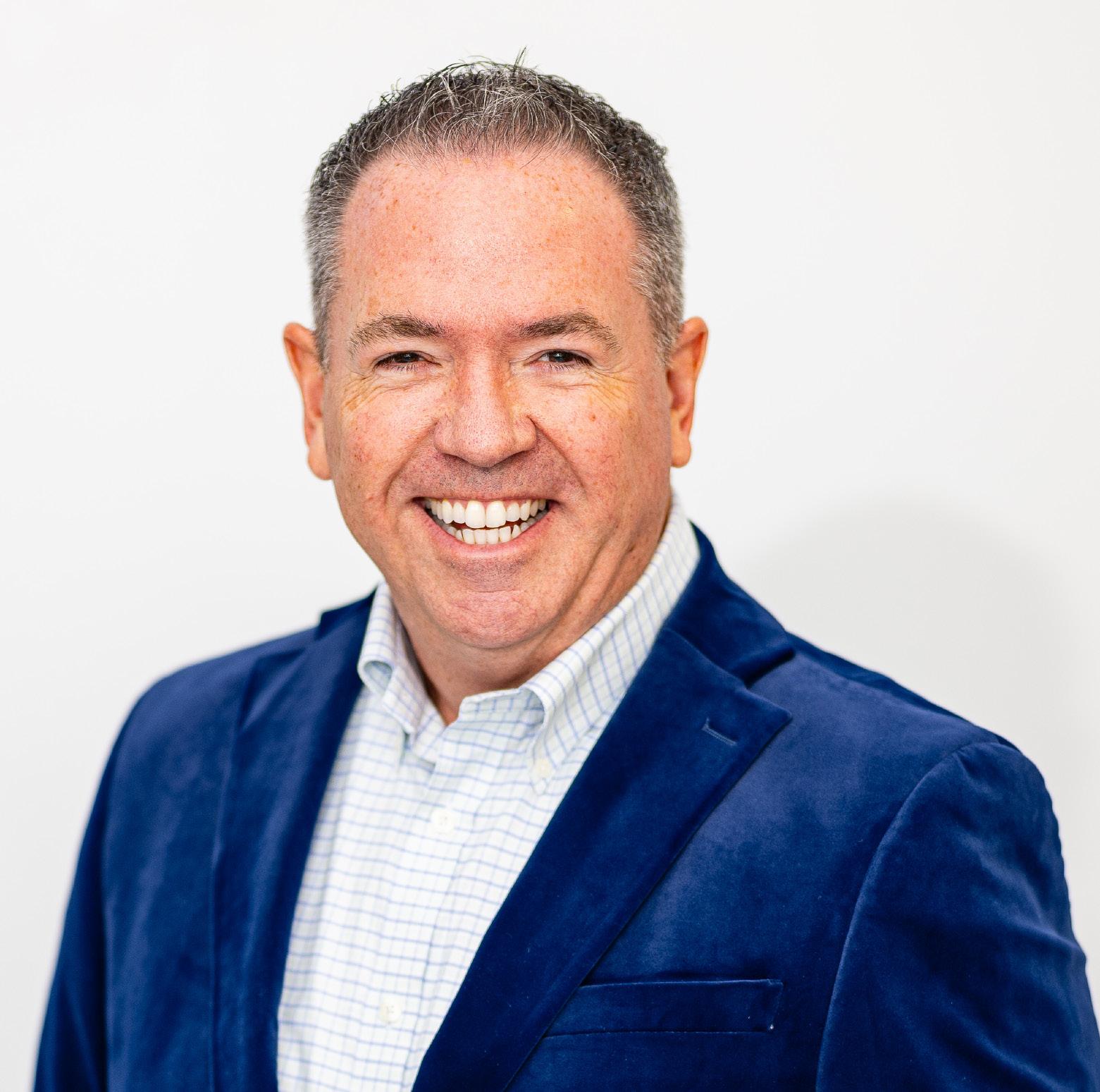


“One of the unique ways we give back to the community is by sharing our expertise in growing online businesses. Our senior leaders often mentor and coach small business owners and guest lecture at universities and other events. By offering our knowledge, we help others overcome challenges in their business journey.”
TOM COX
Founder & Executive Chairman, golfballs.com
“Stine Home & Yard is committed to building stronger communities: from supporting school academic and sports teams to Catholic Charities and St. Jude Dream Homes. We are also proud to support Holden’s Hope, a foundation created by one of our family members. Our commitment extends beyond our local communities to national organizations like Children’s Miracle Network, Muscular Dystrophy Association and the American Cancer Society. These partnerships allow us to positively impact lives both near and far.”
TIM STINE Chief Financial Officer, Stine Lumber Company
“At Ballard Brands, our commitment to the local community goes far beyond the products and services we offer. We actively engage in initiatives designed to give back and support those around us. In addition to donations, our commitment extends through our annual cause marketing partnerships, where a portion of our proceeds is donated back to a selected charity or organization. This allows us to support causes that resonate with our community. Past organizations include Make-A-Wish Foundation and the American Heart Association.”
SCOTT BALLARD Founder, Ballard Brands

“Beyond representation of several local and statewide political entities, our firm spends significant volunteer time in our respective communities. Attorneys and staff serve on multiple educational, chamber of commerce, economic development and other public, private, and nonprofit boards. As a firm and individually, we provide financial assistance to numerous charities. We recognize our obligation to give back and to devote our talents and treasure to improving our communities as best we can.”
WAYNE FONTANA
Managing Partner, Roedel Parsons Blache Fontana Piontek & Pisano

“The Flick Family Foundation, started in honor of my late father Richard J. Flick, focuses on charities that bring educational opportunities, as well as moral, spiritual, and social training to our youth. I currently serve on the Board of Directors for Boys Hope Girls Hope and Saint Paul’s School. The Flick Family and the Banner dealerships have also supported Feeding the Needy, Covington Rotary, Covenant House, Bridge House, Boy Scouts, Northshore Food Bank, and many more charities over the years.”
RICK
FLICK
President, Banner Automotive Group

“ReCon Management Services, Inc. is passionate about serving our community, and we recognize that our impact goes beyond building successful projects. We focus on impacting the communities in our geographical footprint through volunteering our time, donating supplies, hosting special annual drives such as toy, food and blood drives, leading disaster recovery relief efforts, and partnering with businesses, organizations and local families through financial donations and sponsorships.”
ROGER BOYETTE President, ReCon Management Services, Inc.
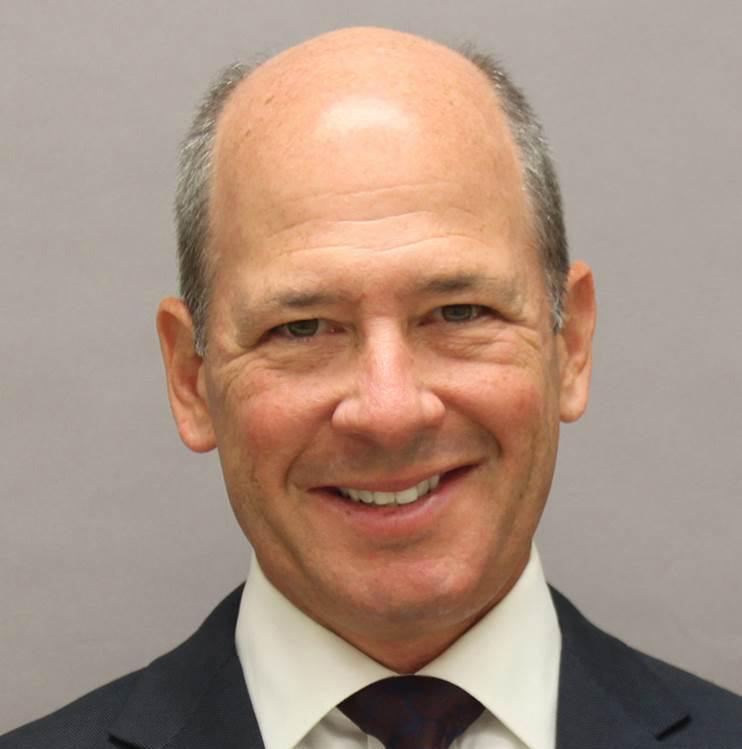
“At Liskow we believe that pro bono work is not just a professional obligation, but a crucial avenue for advancing the legal rights of diverse and historically underserved communities. Our firm actively partners with local nonprofit organizations to provide essential legal services, and we take on additional pro bono matters through referrals from individual attorneys, neighborhood clinics, and public and indigent defender offices. Pro bono work is integral to our mission and reflects our deep commitment to social justice.”
ROBERT ANGELLICO Shareholder, Liskow
“The Laitram family of companies founded Ready Set Read, a phonics-based reading tutor program for Pre-K through second grade students in the Greater New Orleans area. We are sponsors of the Young Leadership Council and fund global humanitarian efforts. Laitram actively participates in city and state reform efforts, promotes local education by sponsoring high school robotics programs throughout the state, and welcomes students for facility tours showcasing the manufacturing industry. Laitram also encourages employee participation in community giving by matching charity donations.”
BLAKE BOURGEOIS Corporate Counsel, Laitram, LLC,
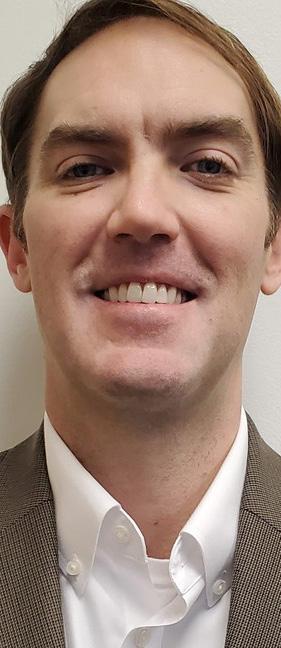
Since our first job in 1979, Performance Contractors has employed, supported, and celebrated the folks of Louisiana. Over 44 years, we’ve worked everywhere while providing better opportunities for our local workforce — in Construction, Turnarounds, Maintenance, and beyond. Wherever we build, we’re building on the relationships we made right here at home.




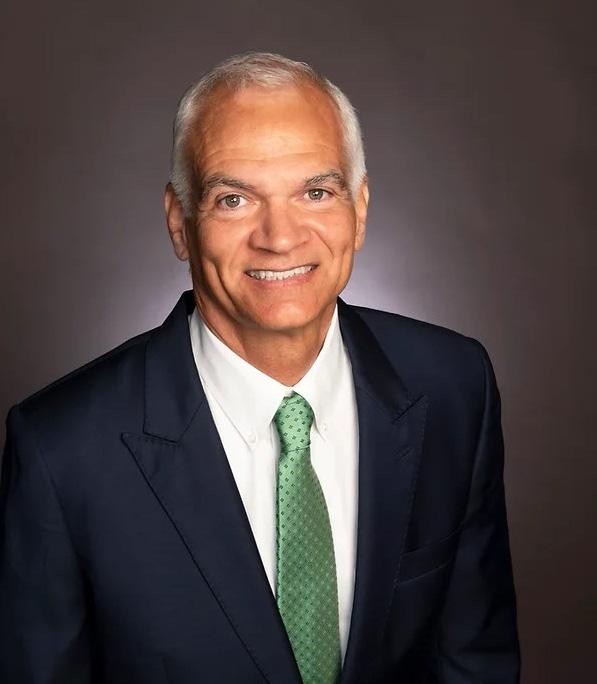

BY MARY BETH HUGHES
Q: BESE recently approved a new K-12 accountability formula. Why is this so critical for Louisiana businesses?
A: BESE recently defined Career & College Readiness for Louisiana students in response to student and business demand. Business leaders are wanting employees to be “career ready.” The new school accountability system, unanimously approved by BESE, provides substance to the definition by recognizing the value of work-based learning opportunities. The old system did not place any value on internships, so there is only a 5% participation rate.
Businesses that work with their local school systems to create internship opportunities will help their community by investing in these students, broadening their perspectives and preparing them for career and college. If we want to address the out-migration concerns in our state, attract skilled labor and new business, it’s critical that we make education relevant so that Louisiana businesses can build their employee pipeline and thrive.
As president of the Louisiana State Board of Elementary and Secondary Education (BESE), Ronnie Morris is on a mission. He wants the state to reimagine the traditional school experience in a way that makes it relevant for students, preparing them for a career and/or college after high school. Morris—an electrical engineer by trade—spent years volunteering in local high schools and recognized that students always had similar questions: “Why is school relevant?” and “What is the application?” We caught up with him recently to get his insight and his vision for the future of education in Louisiana.
Q: With a new focus on work-based learning, LABI member companies have a unique opportunity to invest in their future workforce. What would you say to those businesses who are interested in welcoming students into the workplace?
A: BESE members will be leading a tour through every BESE District this year to raise awareness of the new internship opportunities for high school students. We will be sharing proven models in our state, both in industry and small business, to establish connectivity and build relationships with school systems, students and parents.
Businesses that are interested in welcoming students into the workplace will benefit by leveraging the best practices from these models and custom fitting them to their operation. Many of the perceived hurdles (such as minimum age requirements) have been addressed by winning attitudes and appropriate mitigation strategies. Inquiries should go to BESE Executive Director Tavares Walker who will be coordinating the initiative. Mr. Walker will be working with BESE members, state agencies, business and industry, as well as school and community leaders across the state, to engage them in the tour.
“If we want to address the out-migration concerns in our state, attract skilled labor and new business, it’s critical that we make education relevant so that Louisiana businesses can build their employee pipeline and thrive.”
Q: Education Savings Accounts (ESAs) made it through the legislature earlier this year. What can you tell us about the ESA rollout?
A: The program administrator and the policy for implementation were approved by BESE on August 21. Members unanimously supported the LDOE recommendation for Primary Class Inc. (Odyssey) to administer the LA GATOR program based on the review from a 10-member panel. Statute requires a legislative review by the Joint Legislative Committee on the Budget, tentatively scheduled for mid-September. The final rule should be in place by end of year with parent enrollment no later than March 1, 2025.
Q: It’s been a busy year at BESE with several monumental reforms made. What are you most looking forward to about the future?
A: I am looking forward to hearing from students, teachers, and parents about what a difference these reforms have made. We are currently ranked 40th nationally in K-12 education, right on the cusp of 3rd quartile. That is an unprecedented conversation in the history of our state, and one that opens doors for untapped opportunity to rise and shine!

Thank you, Blue Cross and Blue Shield of Louisiana employees, for putting Lousiana first.
Because of your hard work in the community, our company has been recognized as one of the 50 most community-minded companies in the country by former President George H.W. Bush’s Points of Light organization. This is the sixth year in a row you’ve won this honor!
Last year, Blue Cross employees volunteered more than 45,000 hours to neighbors and communities in Louisiana.

BY MARIE CENTANNI
New partners join the LA Driven movement to help push Louisiana forward in becoming an economic leader in the South
When Gov. Jeff Landry took to the stage at LABI’s annual meeting in February of this year, signing an executive order restoring the Industrial Tax Exemption Program (ITEP) to its full usefulness as a critical tool for economic development, it marked the first yield of seeds planted months before when LABI unveiled its LA23 Strategic Plan.
Since then, major pieces of the 30-plus recommendations to position Louisiana as the South’s economic driver have been put into place as legislators, policy leaders, stakeholders—and even the private sector—pull together to tackle Louisiana’s ultimate to-do list.
Like most higher education institutions in Louisiana, the University of Louisiana at Lafayette has a vanity license plate program that funds scholarships for students. But now, UL Lafayette’s Alumni Association is adding a little twist.
“We wanted to reassess where this money is going and how can we make an impact,” says UL Alumni Association CEO Amy Armstrong, “We already have endowed scholarships supporting academic components, and so we wanted to look at how can we leverage this money in a little bit different way.”
Armstrong looked to the LA23 Strategic Plan and its higher ed and workforce recommendations. Now

part of LABI’s LA Driven initiative, LA23 laid out four critical lanes of activity to correct course and power the state forward: Workforce Development and Education, Tax and Business Climate, Economic Development and finally Safety and Resiliency. Within that first lane comes recommendations to not only upskill and credential our adult working-age population, but to attract back to Louisiana those who have moved out of state and could be a part of our talent pool here.
“In looking at the strategic plan, one of the pillars talks about how if we help Louisiana citizens get credentials and degrees, there is strong economic benefit not only for the state and their earning power, but also their ability to afford food and benefits and housing, and it has tremendous benefits for our people, our communities and our state as a whole,” says Armstrong. “So then we looked at how many former students we have who have started here, but never finished. The state has a program called the Completer Program, encouraging people to come back and finish their degrees, but at UL, it never had a scholarship component. That’s where we thought the Alumni Association can
After analyzing LABI’s LA Driven strategic plan, the University of Louisiana at Lafayette implemented a scholarship to go along with its Completer Program—designed to draw former students back in to finish their UL degree. This focus on continuing education has long-term implications for workforce retainment and economic development.
bring a different level of support.”
In August, UL Lafayette unveiled this retooled scholarship program, renamed the Comeback Scholarship, targeting former students with at least 60 hours under their belt. These students could be awarded $2,000 each as the scholarship program doles out the first $100,000 wave of support.
“A lot of people talk about how the University is about education, but universities also plug into the economy for the state as well,” Armstrong continues. “If we can help with the economic diversity, economic development, and social well-being of our state, we can help move the needle. Our alumni are all over this state, and it’s important for us to support them like we support family. This isn’t just about who is degreed and who isn’t, but how we can make our communities better and we feel very strongly this Comeback Scholarship is a good way to do that.”
Non-completers are just one potential talent sector to tap as LABI and partners look to grow a robust workforce pipeline, equipping citizens of all ages with the training, education and pathways they need to seize job opportunities and be part of a growing economy.

The majority of the more than 50 LA Driven bills passed during the special and regular legislative sessions in 2024 fell under the Workforce Development and Education category. From expanding school choice to high-dosage tutoring, training incarcerated persons for re-entry and consolidating a web of workforce programs under the Louisiana Workforce Commission, legislators joined LABI in systematically checking off that ultimate to-do list, creating a powerful momentum that continues to build and inspire.
Another effort gaining momentum from the legislative session was the push to convince Louisiana’s military workforce to remain in state after completing their service. It’s an effort legislators allocated $1.5 million through the Office of Veterans Affairs to take on, as part of a new organization called The Boot. As in, what one wears in the military and, of course, the unique shape of Louisiana.
“Eighty-five percent of all of those serving at Fort Johnson and Barksdale Air Force Base in Shreveport are leaving Loui-


siana after they’re done with their service,” says Andrew Ward, executive director of the Acadiana Veterans Alliance and part of the team who kicked off The Boot. “That’s just unacceptable if they’re already here, and they’re trained, and they can enter the workforce running.”
Ward is hoping to convince that 85 percent to stay, with teams of recruiters leveraging an important trigger six months prior to the leave date for any active-duty military. At that six-month point, they’re enrolled in a Transition Assistance Program (TAP) course, helping them ease into civilian life—with lessons like finding car insurance and balancing a checkbook.
“What we did was take it one step further, and we’re going to do like a white glove concierge,” Ward says. “Bus you in, fly you in, bring you to Lafayette, bring you to the North Shore, bring you to Baton Rouge and really showcase the best of what the state has to offer. So that way you’re like, ‘Holy cow, I have a career waiting for me, I have a house waiting for me, I have a support system waiting for me.’ And you’re a 25-yearold who’s not a babe lost in the woods.”
Similar programs have produced major results in other states. Ward says to break
even on the $1.5 million investment, The Boot would have to convince 26 active-duty military personnel to stay in Louisiana after completing their service; there are currently more than 15,000 active-duty service members in the state. “Indiana pulls in more than 300 a year,” he says. “And they don’t have a major military base. And they’re not Louisiana.”
And there’s certainly no alligator hunting in Indiana, which is part of the first “test tour” for soon-to-be veterans this month in southwest Louisiana, along with outdoor concerts, university tours and local leaders addressing the group, truly treating them like VIPs.
“You want to be able to have a 25-yearold experience Sportsman’s Paradise and understand that there is a lot of opportunity here,” Ward says. “We bring them in for food, fun, and culture and then they stay for the careers, and the way of life and the low cost of living that we have. We really are recruiting these individuals like you would a college athlete.”
The first steps on the LA Driven journey proved to be a powerful launch, but that’s
just the first year of a multi-year, complex set of recommendations to implement. Next up is one of the toughest to untangle— tax reform. LABI Board Chairman Jason DeCuir, of Advantous Consulting, says the good news is the groundwork has been laid for consensus and action.
“It was exciting to see a lot of synergy and like-minded ideas between LA Driven and initiatives that the current governor and legislature have put out in,” says DeCuir. “The good news is that many stakeholders are in agreement with the principles laid down, and policy plans and discussions continue to center around the principles outlined in LA Driven. So now, we’re in the position of trying to figure out timing—whether to do it in a special session, or whether the approach should be taken in the next fiscal session.”
That fiscal session—held in odd years when the legislature is tasked with focusing on tax-related measures—begins in April 2025. Look to LABI as your resource headed into that session, as we take up the next major milestones on the path to prosperity.
For more information, visit ladriven.org.
ARE MORE IMPORTANT THAN EVER.

We craft the stories that educate, captivate, and motivate the people of the Gulf South. We have chosen to stay and build so we can speak directly to the people most important to us.


There are difference makers among us. Those willing to envision something bigger, better and brighter for the future with the tenacity and drive necessary to make those visions a reality. These are the people and companies who see possibilities and are not deterred by potential obstacles. They carve a path through.
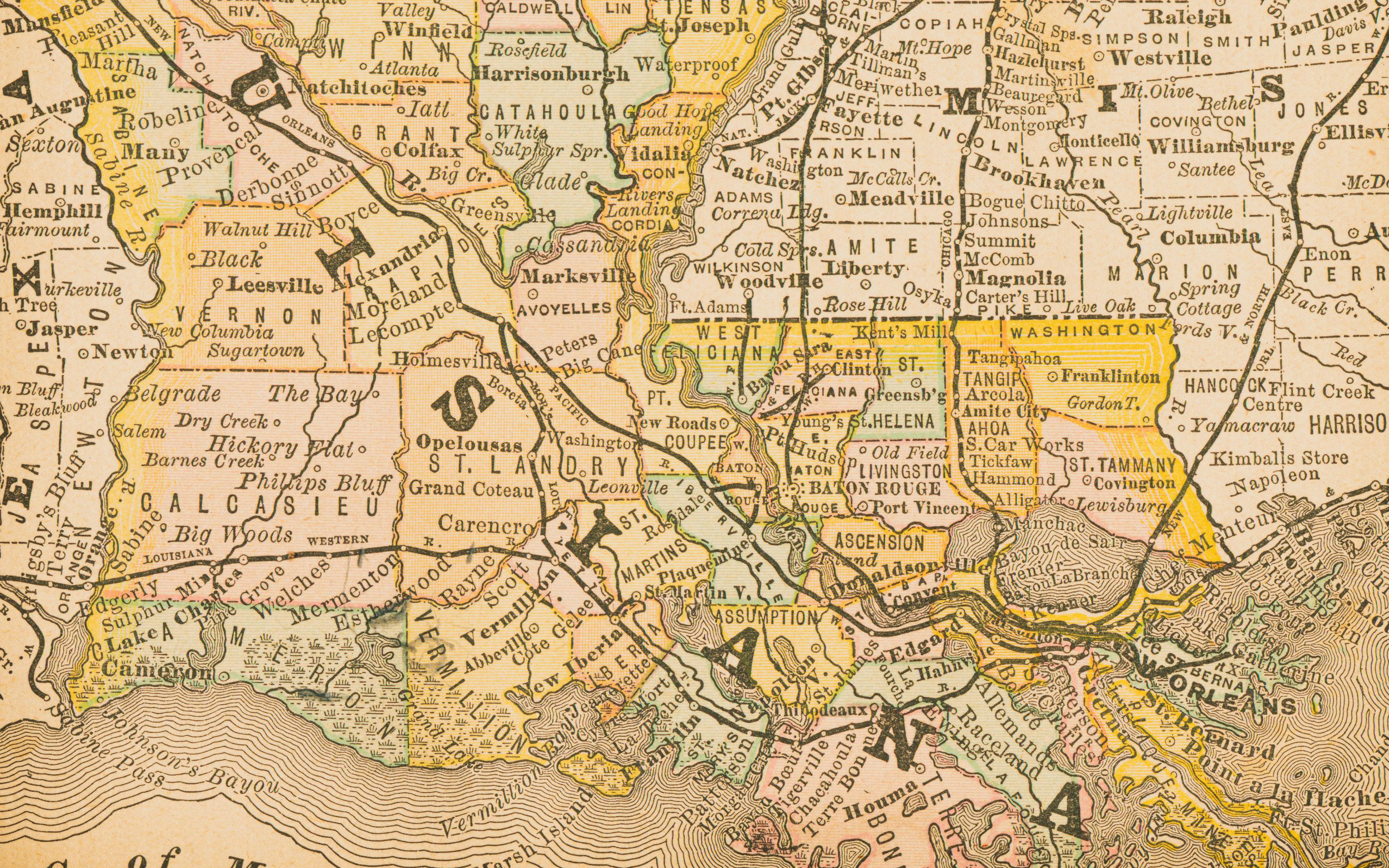
At LABI, we know the importance of carving a better path for the future. It’s what drives the passion we have for our LA Driven strategic plan for the state as well as our endeavors at the Capitol and beyond. On the next few pages, we highlight people and companies who share our same drive. These are the difference makers who’ve met challenge after challenge in their own communities with thoughtful and strategic solutions. They create jobs and opportunities. They create a better tomorrow. Take a look at what’s happening in your own backyard and get inspired to make the impact that is needed right now where you are.
Apprentices with unCommon Construction build a whole house from foundation to finish while earning hourly pay, high school internship credit and a matching scholarship after graduation.

BY ASHLEY GORDON
AARON FRUMIN WAS well into his college years at UC Davis when he realized he didn’t know what he wanted to be when he grew up. A common refrain from youth—but this California native decided to take an uncommon path. On track to graduate early, Frumin dropped out and ultimately found himself on the dilapidated, flood-soaked streets of New Orleans in the wake of Hurricane Katrina, boots on and hammer in hand thanks to a stint with the Red Cross.
“I fell in love with the mental and physical rigor of hands-on work,” says Frumin, who recalls feeling empowered and eager
to toil tirelessly to make a positive impact.
“I also fell in love with New Orleans.”
Those two loves did not leave Frumin in the following years after he finished his degree at Tulane and spent time in Colorado, first working with Teach for America then as a teacher at a charter school. He envisioned building houses with high school students and using the profits to fund scholarships for the kids who were building the houses. Time had passed since his indecisive undergrad days, and Frumin could finally see his future unfold.
“I put all my tools in my truck, and I drove back to New Orleans,” recalls Fru-
min. “I figured, if the model couldn’t get a foothold, I’d just do something else. I was a journeyman. And unCommon Construction truly became a bootstrap startup.”
Fast forward to today and Frumin is leading a crew and sparking a movement that is garnering national attention in workforce development and transformational-education circles. His New Orleans-based nonprofit, unCommon Construction, is entering its 10th school year of using the build process to empower youth with the skills, network, resources and experience necessary to enter and lead the workforce after high

school or college. Students from different high schools apply to join a diverse team to earn hourly pay and school internship credit for building a house in a semester. With the revenue from each project, apprentices also earn a matching “Equity Award Scholarship” for further education, industry certifications or the tools needed for long-term employment. Through more than 100 hours each semester, apprentices develop career awareness and exposure, technical, soft skills, and leadership abilities through a work-based learning experience in a real-world classroom.
“Because we’ve been partnering with
unCommon for years, I’ve had the privilege of watching these students mature greatly through the onsite experience and training,” says Lauren Gibbs, owner of Gibbs Construction. “The first time you meet a student, they may be timid and not look you in the eye. But by their third semester in the field, they are very confident in what they are doing and how they interact with others.”
Gibbs—and other industry partners—often meet students at a “Framing Character” session on an unCommon jobsite. There they work alongside the team on the day’s construction goals: building a
house while also building relationships which, ultimately, builds confidence in the students. In addition to participating in an unCommon house build, industry partners are also encouraged to engage students in outside projects as well as offer to mentor, consider donating and to be open to future employment of a current student if the position fits. And while the completion of a house build is an incredible achievement for these high school students, the actual construction process and soft skills learned are just the beginning.
“One of the most rewarding things for me is seeing the extended impact of our
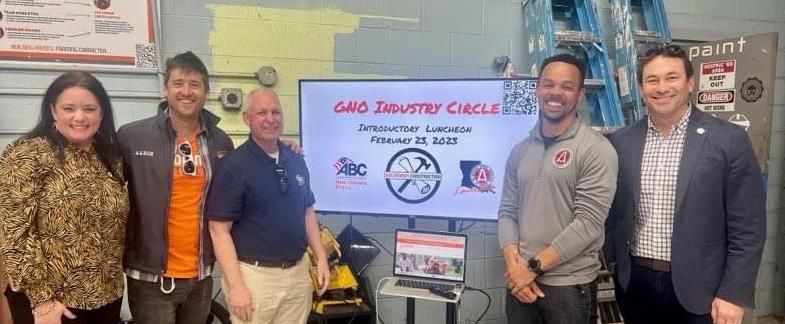
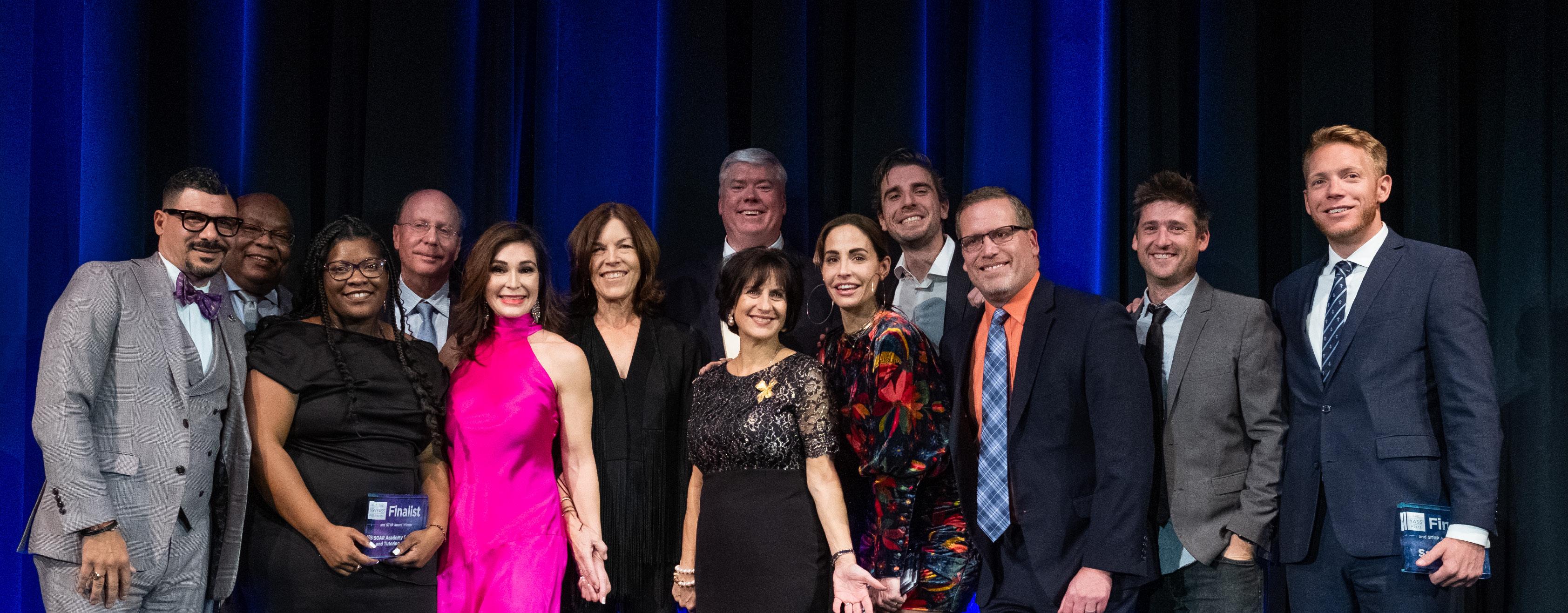
program as the youth from unCommon have become nationwide exemplars of what’s possible,” says Frumin. “Youth who completed years ago are experiencing some really remarkable outcomes in their lives and careers—graduating college, getting promotions, starting their own businesses—and it’s exciting to see their stories ripple throughout our industry along with a broader conversation about education reform and the next generation of skilled leaders.”
And the ripple effect of unCommon’s impact has been gaining national attention. The nonprofit won the Catalyze Challenge, a national award honoring career-connected learning that garnered $500,000 to help it expand and diversify its apprenticeship program. unCommon was also a $500,000 finalist for the Yass Prize, an accolade highlighting sustain-
able, transformational, outstanding and permissionless education. The organization was recently featured on the cover of Associated General Contractors of America’s magazine cover, and now Frumin has been chosen by the national nonprofit Afterschool Alliance as one of only 15 leaders in the country to service as a 2024 Afterschool Ambassador.
“Aaron is a compelling leader who raises up everyone around him,” says Gibbs, speaking on Frumin’s vision, his enthusiasm and his drive. “He has definitely been a gift to the New Orleans community, and now to other communities beyond our city.”
In fact, unCommon has recently expanded into Minneapolis—thanks to a micro-grant from VELA Education Fund and a $150,000 investment from Stand Together Foundation. While Frumin and founding program manager Spencer
Grant, a native of Minneapolis, work to make the first expansion successful, there is also expansion of the program back in New Orleans. Frumin recently announced the acquisition of a 5,000-square-foot building in the heart of New Orleans to serve as the unCommon Campus. The new space will include a two-story office, a 2,000-square-foot workshop with three roll-up garage doors, and ample parking and material lay-down space.
“Essentially, unCommon is a construction company with really intentional training programs. Through that lens, a construction company of our size needs a place to operate, grow, and evolve,” says Frumin. “The new unCommon Campus will make our existing programs even more effective and sustainable by providing new space for vehicles, tools, storage and more, while also creating expanded earning and learning opportunities for youth and adults through exciting new programs and initiatives.”
In celebration of its upcoming 10th anniversary, unCommon launched its first cohort of the Greater New Orleans Industry Circle (GNOIC) in the spring. Seventeen New Orleans construction companies serving the region joined as founding members to support the mission and deepen their engagement with the 100 high school apprentices who participate in the program each year.
“Since 2015, unCommon Construction has developed 400 apprentices who have earned over $400,000 in pay and scholarships from their work in the program,” says Michael DeGruy, GNOIC co-chair and President of Ryan Gootee General Contractors. “As members of the GNOIC, we’re honored to help the organization grow their impact over the next 10 years.”
GNOIC members will convene regularly to discuss how to support and develop a younger and more diverse workforce for the construction industry while also having first access to engage directly with apprentices and alumni through volunteer build days, field trips, hiring fairs, mentorship opportunities, and lunch & learns. In this inaugural year, GNOIC members are looking toward the long-term impact their support can provide in creating more robust local workforce development
opportunities and a stronger regional economy. After a decade of making an impact in the lives of everyday students, Frumin’s resolve has created a ripple effect that is reaching far beyond his early days when he had only a truck and some tools to his name.
“As we enter our 10th school year, we maintain our vision for a world in which all youth have a clear path to a meaningful and rewarding work life. At unCommon, we do that primarily through our work-based learning programs that general financial, social, and professional capital for our youth through real-world experience,” says Frumin. “In the last few years, we’ve responded to the call to explore expansion to new locations with our headquarters firmly rooted in New Orleans. As we continue to learn and understand unCommon’s potential for impact at scale, we envision an interconnected network of these highly effective programs working with students attending an array of schools in cities nationwide.”

gathers apprentices on the job site for an end-of-day shoutout and reflection activity. Of these 400 participants in unCommon over the years, more than 75% completed the program, exceeding retention rates of similar programs; and 100% of program completers finished high school on time and enrolled in post-secondary education or attained a job within three months of graduating high school. In addition, 75% reported intentions to pursue careers in construction or related fields.


Syrah Resources announced two years ago that it would invest $176 million to expand its graphite processing facility in Vidalia, giving the state a supply chain foothold in the rapidly expanding market for electric vehicle components. The facility commenced production in the first quarter of 2024.

BY GARY PERILLOUX
CHEMICAL INDUSTRY veteran Todd Stevens wears safety on the sleeve of his blue Syrah Technologies uniform. At his company’s newly expanded plant on the Mississippi River in Vidalia, whiteboards detail best practices, document safety improvements, and share teachable moments. Those teachable moments matriculate from a half-dozen departments within the graphite plant to morning shift meetings in the administrative conference room.
“Risk and consequence,” says Stevens. “That’s what it’s all about.”
Those are bywords for many chemical manufacturers. But the stakes are particu-
How a big investment in a small area of the Louisiana Delta has far-reaching effects
larly high for Syrah. Based in Melbourne, parent firm Syrah Resources is directing a global play in the electric vehicle industry. What happens in corporate boardrooms in Australia impacts the company’s mines in Mozambique. Natural graphite shipped from Africa to the Port of New Orleans lands in industrial bulk bags bound by truck for the farm fields of the Louisiana Delta.
In fact, Syrah Vidalia is the first battery-grade natural graphite active anode material of its scale built outside of China, supporting the growing EV industry.
At Vidalia, graphite flakes flow through a milling process, then polishing, purifica-
tion, precision testing for performance, and shipment via new industrial sacks to its major customer, Tesla.
Vidalia’s end-product—active anode material for the negatively charged part of batteries—makes EV performance possible. Eventually, Syrah’s refined AAM graphite will reach Tesla plants in California, Texas —even Berlin.
If Jaques, the Shakespearean orator in As You Like It, were around four centuries later for this “all the world’s a stage” moment, the global graphite play would set his head spinning. His final gaze would lead to China.
China exerts unquestioned dominance in the graphite market, with estimates of as much as three-quarters of the world’s graphite supply under its aegis. That lends the Asian nation great leverage in the battery market that drives the electric vehicle industry.
China now sells in-country EVs at a rate exceeding 10 million vehicles annually, or more than 50% of all new car sales in China. Conversely, combined EV and hybrid sales reached just 16% of the U.S. market in 2023, according to the U.S. Energy Information Administration.
Regulatory hurdles, political resistance, too few charging stations, global supply chain challenges and—most significant— nagging consumer questions about range and performance have slowed the pace of EV sales. Domestic sales are growing, says Syrah’s Stevens, albeit more slowly.
“It is still a high-growth industry,” he says, comparing the EV evolution to what happened over a century ago. “I do liken it to making that transition from the horse-
and-buggy to the Model T. You can have the same position, that it will never work having an internal combustion engine, because there’s nowhere to get gas, there’s no interstate, there’s no roads. But we managed to get past that. … I’m very optimistic that the health of the industry will be there over time as the technology improves.”
Even the green-leaning Biden administration braked the transition when faced with supply chain realities. To qualify for full federal EV tax credits of $7,500, vehicles may continue to contain Chinese graphite until 2027. The two-year reprieve also removes the threat of penalties to automakers for using battery materials sourced from entities of foreign concern (China, North Korea, Russia, Iran). At the same time, the Internal Revenue Code now allows eligible EV purchasers to claim an immediate $7,500 rebate at the dealership, rather than file a delayed claim in a tax return.
Those tweaks are expected to keep EV sales up, but the carrot dangled in front of automakers to use domestic natural graph-

ite, like Syrah produces, won’t be as strong until 2027. Escalating EV battery demand means synthetic graphite (a category also led by China) will maintain a majority market share, according to research firm Rystad Energy. Yet the heavier greenhouse gas impact of synthetic graphite means Syrah’s natural graphite product will be prized by companies like Tesla.
The U.S. Geological Survey has identified natural graphite reserves in nations like Turkey and Brazil, though largely untapped, that exceed those in China. India also is expected to join African nations as a major player.
Syrah has no illusions about dominating the market (its current annual capacity of 11.25 kilotons represents a single-digit share) but the company is focused on a strategic, profitable share.
“We’re already producing material,” he says. “It’s in the best interest of the battery makers and automakers to get in line now in order to qualify for those (more restrictive) tax credits that have now been moved to January 1, 2027.”
Meanwhile, Syrah Technologies has completed a $209 million initial investment in Vidalia, leveraging a $102 million federal Department of Energy loan to build the commercial-scale plant. The company also has met a goal of 100 employees working two 12-hour shifts daily.
The Vidalia plant generates local spending at motor supply houses, fabrication shops, restaurants, hotels and the city’s convention center. Neighboring Ferriday benefits from Syrah’s leasing of several former cotton warehouses to store raw and refined graphite.
Additionally, Syrah has an option on 46 acres adjacent to its current 38-acre plant site. Should demand surge, Stevens said the company is prepared to build an additional plant and double employment in Vidalia. Long-range plans would lead to building AAM facilities in other parts of the world, but Vidalia would retain a flagship status as the company’s graphite proving ground in the EV era.
Initial concerns about finding industry talent for the Syrah site were quickly allayed. Some offshore oil-and-gas work-
ers were eager to work closer to home. Engineers, operators and technicians left remote manufacturing jobs for the same reason. Syrah also invested in vo-tech classrooms with Vidalia, Ferriday and Monterey high schools, along with a Central Louisiana Technical Community College training partnership.
And a symbolic attraction played a key part in finding talent. The initial Vidalia production will help save the equivalent of 52 million gallons of gasoline each year, while carving out a key beachhead in a critical industry of the future.
“I think being in an organization that has the opportunity for growth—and exponential growth—did attract a number of the employees here,” Stevens says. “To be the first plant of its kind in the world outside China, that directly impacts the environment, is a significant milestone in my career. And there’s a number of people here with that sentiment.”



When designing Tulane’s football stadium on its landlocked, urban campus, much consideration was given to the neighborhoods surrounding it. For example, perforated metal screening shades concourses and filters light into circulation space while framing views.

BY GARY PERILLOUX
ROBERT RICCARDI and Rick Dickson stared at the napkin. The bustle of Louis Armstrong New Orleans International Airport swirled about them. No second line band marked the occasion. Yet history undeniably was made.
“You think we can squeeze a stadium in here?” asked Dickson, then Tulane University’s athletics director, while examining the napkin. Riccardi, a principal architect with Gould Evans, finished a scale drawing on the napkin to confirm the dream: Yes.
The Green Wave could roll down St. Charles Avenue from the Superdome and truly play football at home again. Within five years, Tulane opened a $75 million,
30,000-seat arena. The intimate arena filled a 35-year-old hole in the heart of the campus left by the 1979 demolition of Tulane Stadium. Beneath an adjoining football practice facility, a 600,000-gallon drainage system helped the architectural miracle meet post-Katrina mandates of the Sewerage & Water Board of New Orleans. The magical meets the practical. That community focused mindset and determination that brought football players home a decade ago, thanks to Gould Evans, continues weaving Crescent City dreams under a new name: Multistudio. The architectural firm rebranded in 2022, capping a transition to an employee-owned firm of 150 professionals. They
work in Kansas City, Missouri (headquarters); Lawrence, Kansas; Phoenix; San Francisco and New Orleans, where Martin Tovrea serves as managing principal and Lexi Tengco serves as vice president.
Multistudio New Orleans recently moved from Magazine Street to a new River District studio at the corner of Religious and Race streets. “You can’t get more community than that,” muses Tovrea, an LSU-trained New Orleans native.
He points through a sun-splashed office window where, a stone’s throw away, the magic rides of carnival coalesce at Blaine Kern’s Mardi Gras World. Raised in St. Louis, Tengco credits her New Orleans calling to a grandfather who heeded the


siren song of Jazz Fest each year, and to an influential aunt who became a chemical engineer at Tulane. Tengco chose architecture over art and Tulane over the School of the Art Institute of Chicago.
Multistudio’s reach extends beyond New Orleans. Among Tengco’s favorite projects is the West Ascension Early Learning Center. Multistudio transformed the first floor of the 150-year-old Lemann Building in downtown Donaldsonville, preserving history beside Crescent Park while establishing a haven for kids under 3.
“They sold everything from clothing to tractors,” Tengco says, citing residents who recalled the Lemann mercantile store. “We were able to preserve and maintain beautiful storefront displays and add on to them, so that the children can actually interface and interact with that space in a safe manner.”
Ascension Parish government funded the project, with Nicholls State University operating the center as a model for early childhood development. Two blocks down Mississippi Street, Multistudio overhauled the Ascension Parish Library in Donaldsonville, converting it to a 15,500-squarefoot contemporary learning center for all
ages, embedding historical displays with the expertise of local artist and archivist Jim Blanchard, and “future proofing” the facility with sliding-glass office walls and moveable bookshelves.
Most remarkable is how the community defined the function of a 3,000-squarefoot addition.
“You may not think of a recording studio as an amenity in your library but that ended up becoming part of the program,” Tengco says. “And it was very clear that that was an important piece for the community.”
In Lake Charles, Multistudio evaluated the athletics facilities across McNeese State University in the wake of 2020 hurricanes Laura and Delta. One of seven campus renovation teams selected by the State of Louisiana, Multistudio managed $10 million in emergency repairs.
“It’s been incredibly impactful to see the decline of McNeese’s student population and now the rebirth with growth back in play,” says Tovrea, whose firm is pursuing another pillar of Lake Charles revival: health care. Multistudio hopes to design a federally qualified health services clinic in an underserved neighborhood.
The project would resemble a 65,000-
square-foot health center on Elysian Fields Avenue in New Orleans, where the private nonprofit CrescentCare completed a $23.5 million facility designed by Multistudio. That center joins 32 examination rooms with eight dental stations and additional space for behavioral therapy, and psychiatric and legal services.
Impacting community in practical yet magical ways has become Multistudio’s mantra. Upon establishing a New Orleans office in 2007, Multistudio’s first projects were four New Orleans public libraries that anchored and healed devastated neighborhoods. In Donaldsonville, where the poverty rate exceeds 40 percent, the early learning center and reimagined library are critical seeds of hope in a community hungry for renewal.
“We look at them as ‘community good’ projects that are providing assets to the community members,” Tengco says.
“We’re invested in our communities,” Tovrea adds. “The majority of our work lately has been focused on community— and what that means in terms of impact and outcomes—in areas that have limited resources. Our neighbors are important to us.”
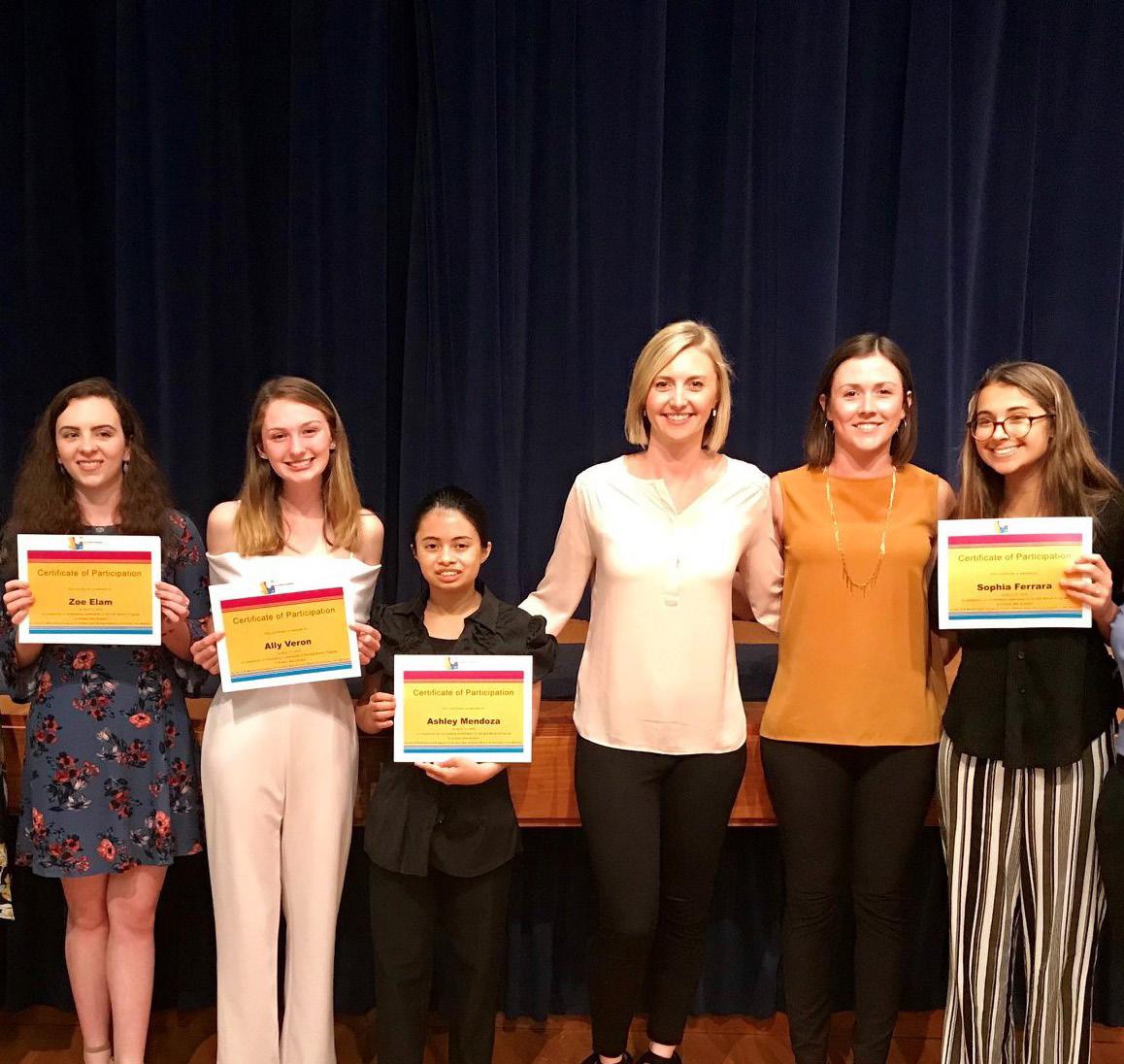
Last school year, 81 New Orleans high school seniors immersed themselves in architecture, construction and engineering. They learned from 25 licensed builders, architects and engineers who volunteered in two-hour sessions every other week.
The seniors visited construction sites, absorbed design work, and learned how to present professional projects, with the help of mentors at the New Orleans Career Center and De La Salle High. One of the mentors, Multistudio Vice President Lexi Tengco, joined the program as a recent architecture graduate in 2011.
“I really loved the program,” she says. “I found it incredibly rewarding… We know that we are making an impact.”
Tengco (pictured, third from right, with ACE mentees) now chairs the ACE Mentor Program of New Orleans. ACE students witness the challenges of becoming a licensed professional, and they’re motivated by salary expectations. Near the end of the school year, a banquet provides them a stage to present their projects.
Some 71% of ACE participants are minority students, 41% are female and 70% attend college or a skilled trades program in ACE fields.
“We want to see our industry diversify, and the way to do it is to encourage young people to pursue opportunities,” Tengco says.
They also earn scholarships. Nationwide, ACE delivered over $3 million in financial aid last year to students who continue their studies in industry-related fields. Funds come from the employers of board members and mentors, along with the public. To participate, visit acementor.org and search for the New Orleans chapter.


Cybercrime is an increasing threat to business. Louisiana experts share the starting points for keeping your company secure.
BY AVA BORSKEY
Turn Key Solutions president and co-founder Henry Overton reviews the latest threats on the Talos Cyber Attack Map. The system detects global threats detected by Cisco’s Talos attack sensors as well as those found on third-party feeds, and it displays the world’s top senders of malware and spam.


You lock the door to your house. You put your seatbelt on when you get in your car. You understand that these safety tips are good advice. As the idiom goes, “An ounce of prevention is worth a pound of cure.”
That same saying holds true in cybersecurity, according to Russ Mathers, director of Strikewerx, an arm of the Air Force Global Strike Command that provides research and innovation in technology, software development, cybersecurity and more.
“Paying for protection up front is costly but less expensive in the long run than paying for data and computer system recovery after a cyberattack,” Mathers says.
A cyberattack is when hackers attempt to steal, expose, alter or destroy another individual or organization’s data or assets. Cyberattacks take many forms, including phishing, ransomware, extortion and business email compromise. Cyberattacks are increasingly common and increasingly costly.
In 2023, the FBI’s Internet Crime Report recorded more than 880,000 cybercrime complaints with potential losses exceeding $12.5 billion. That’s a 22% increase in cybercrime related losses since 2022.

With higher-profile cases and staggering figures inundating the news cycle, it can be easy to view cyberattacks as a faraway phenomenon associated with international corporations. But the 2023 Microsoft Digital Defense Report concluded that the primary victims of ransomware attacks were small- and medium-size organizations.
An estimated 70% of organizations encountering human-operated ransomware had less than 500 employees, according to Microsoft’s 2023 report. And the median loss for companies that paid the actual ransom was $46,000, according to data analyzed in Verizon’s 2024 Data Breach Investigations Report.
Overall losses likely added up to much more. When it comes to the bottom line, cyberattacks impact businesses’ financials significantly due to post-breach response costs and regulatory fines, as well as lost income due to operational downtime. Financial effects can even compound for years in the future, as business-
es who fall victim to cyberattacks often face reputational damage.
Mathers stresses that it’s important to take cyberthreats seriously, and Shawn Usher, founder and CEO of Baton Rouge based IT service and consulting firm Sparkhound, agrees.
“It’s not just a tech problem,” Usher explains. “It’s a problem you’re risking your business on.”
Henry Overton, president and co-founder of the Louisiana-based IT and managed security provider Turn Key Solutions, says the first step for businesses to protect themselves from the fallout of a cyberattack is to understand who owns the biggest risk. “In our world, we’re seeing the liability and the ultimate accountability really being drilled back to the company owners, the leadership at the top,” Overton says.
It’s crucial for business leaders to take the responsibility and initiative to learn about cybersecurity risks and address it squarely, Overton says. In a tech world that’s ever-changing, it’s a challenging
but necessary task. “The onus is on the business owners and the leaders to stay more involved with it every day, to keep their game up,” he says. “You’ve got to know more about it today than you did yesterday to stay competitive.”
Fortunately, many resources exist where business owners can arm themselves with facts and find unbiased advice, from the Cybersecurity and Infrastructure Security Agency to the Federal Trade Commission to the Center for Internet Security.
Usher, who regularly helps business leaders utilize the latest technologies, says his No. 1 cybersecurity tip is don’t avoid what you don’t know. “Identify who inside or outside your organization can guide you in regularly measuring and scoring your security posture, identifying gaps and understanding where you might be exposed to risks,” he says.
Overton says a good place to start is to identify a trusted party to perform an audit and assess your company’s data. “We do a lot of audits, and 100% of the time, there are surprises about what data is on the computers, what data they’re flowing through their email,” he says.
Identifying the types of data a business collects and understanding how it flows through the organization is an important piece of groundwork in forming a cybersecurity plan.
Cybersecurity insurance providers are another group of individuals who can help business leaders understand where and how their business is exposed to risks. In his role at Turn Key, Overton looks at cybersecurity insurance applications every week. He says cybersecurity insurers frequently ask questions concerning implementing multi-factor authentication and patching, or software updates.
Cybersecurity insurance providers also want to see the level of managed endpoint detection, or automatic threat response, that a business’s software has. Moreover, does the business have a manned security operation center?
Overton suggests that business leaders familiarize themselves with and work to improve their Microsoft Secure Score, a measurement that rates a company’s current digital security and provides guidance to strengthen that security posture.
Cybersecurity insurers often check this number when providing rates.
Cyberinsurers also look at the types of cybersecurity awareness training that a business has in place. Implementing training that goes beyond a one-size-fitsall approach can pay off in the long run. Modern technology makes employee-specific cybersecurity training possible with data tracking and objective behavioral measures. For example, if a particular employee struggles with clicking unverified links out of habit, effective cybersecurity training can discover and address this in a tailored way.
While implementing all these cybersecurity measures may seem like a lot of front-end work, it’s better to be prepared and have practices in place than to be caught off guard by a sneak play.
“Cybersecurity is like a football game where you have to make a goal line stand in the fourth quarter where the other team gets infinite downs,” Usher says. “If they score, they win.”
Shawn Usher
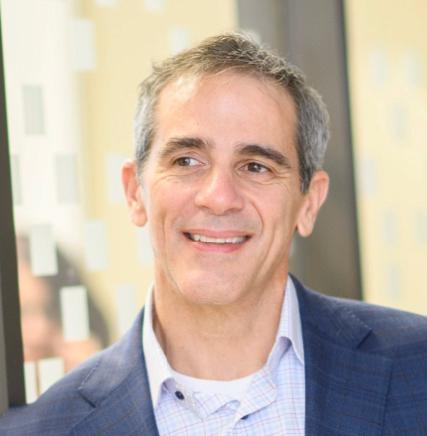
Usher explains that basic cybersecurity protection requires multiple levels of defense, and while it may seem daunting, once programs are in place, it becomes quite manageable.
The 2023 Microsoft Digital Defense Report affirms that basic security hygiene, like the advice listed above, can protect against the vast majority of attacks. Re-

member to stay engaged and partner well. Take cybersecurity threats seriously and adopt routine preventative measures, just as you would make sure the door is locked before you go to bed.
“You’ll sleep better knowing your major vulnerabilities have been addressed,” Usher says, “and that any risks are mitigated with the right controls in place.”
For generations, Associated Benefits Consulting has focused on creating unique, optimized benefits o erings to increase memberships and accelerate association growth. Discover how, with expert guidance from ABC and your benefits broker, LABI members can access benefits and products that complement individual needs.


Corporate charter schools are planting the seeds that will help Louisiana’s education landscape flourish
BY AVA BORSKEY
THE SWAMP OWLS of Discovery Schools. BASIS Baton Rouge’s Gators. The Huskies of Hynes. All of these mascots represent distinct Louisiana schools with one thing in common: they’re charter schools.
“A charter school is a public school, but unlike a traditional public school, charter school students and their families have chosen to be in that building,” Caroline Roemer says.
Roemer is the founding executive director of the Louisiana Association of Public Charter Schools, a statewide nonprofit that advocates for charter schools. With open enrollment and a lottery application process, charter schools provide a free education to a wide range of students. Louisiana has about 150 charter schools serving around 95,000 students.
Charter schools are independently operated and, as such, have a significant amount of autonomy when it comes to curriculum, staffing and other decisions that affect students. There are a lot of nuances to charter schools and a lot of possibilities.
One of those possibilities is a corporate charter partnership, something that Patty Glaser, founding leader of the Discovery Charter Schools network, advocated for when opening Dr. John Ochsner Discovery Health Sciences Academy in Jefferson.
“A corporate charter school partner is when the corporation and the charter school enter into an agreement that benefits both organizations and the community,” Glaser explains. In this case, Dr. John Ochsner Discovery’s corporate partner is Ochsner Medical Center.
“Between Ochsner and Discovery, we partnered to both design and build this amazing school,” Glaser says. “It looks like an elementary school met a children’s museum. It’s beautiful and spacious and inviting. It invites creativity and collaboration.”
Investing in infrastructure is one of the main ways a corporate partnership can help a charter school, according to Roemer. “One of the biggest challenges for a charter school is finding a building,” Roemer says. “A charter school does not come automatically with a facility.”
This was a challenge DeAnna Rowe, executive director for BASIS Charter Schools, knew well.
BASIS is a charter school network with more than 40 campuses located across three states and Washington, D.C. In Louisiana, BASIS has two charter schools in the Capital City: BASIS Baton Rouge Primary School Mid City and BASIS Baton Rouge Materra.
BASIS Materra was made possible through a corporate partnership with Woman’s Hospital, not long after the hospital moved to its new location at the corner of Airline Highway and Stumberg Lane. “We needed a home for our new school in Baton Rouge,” Rowe says. “They [Woman’s] were looking for a high-quality school that could support the influx of families into that area.”
Woman’s Hospital provided BASIS with 71/2 acres of land and helped the school navigate its building process. But the partnership didn’t stop there. Jared Lamb, head of school at BASIS Materra, continues to work closely with Woman’s Hospital to set up capstone projects and internship opportunities for his high school students.
“We already have some of our current 10th-graders who have shared with me that they want to do their internships at Woman’s Hospital,” Lamb says. “With the close proximity and the already established partnership between Woman’s and BASIS, we’re excited for that to really unfold as we continue to grow.”
This sort of continued partnership is mutually beneficial to the school and the business. It’s a key part of the Discovery Schools network as well. Discovery Schools and Ochsner’s partnership is centered on a shared mission: Improve education and healthcare in Louisiana by encouraging students to take an interest in health, wellness and technology.
Glaser says Ochsner has been very
Dr. John Ochsner Discovery Health Sciences Academy’s state-of-the-art facility, which opened in 2021, features multiple science labs, a maker space, a media center and other specialized areas to serve a range of students.
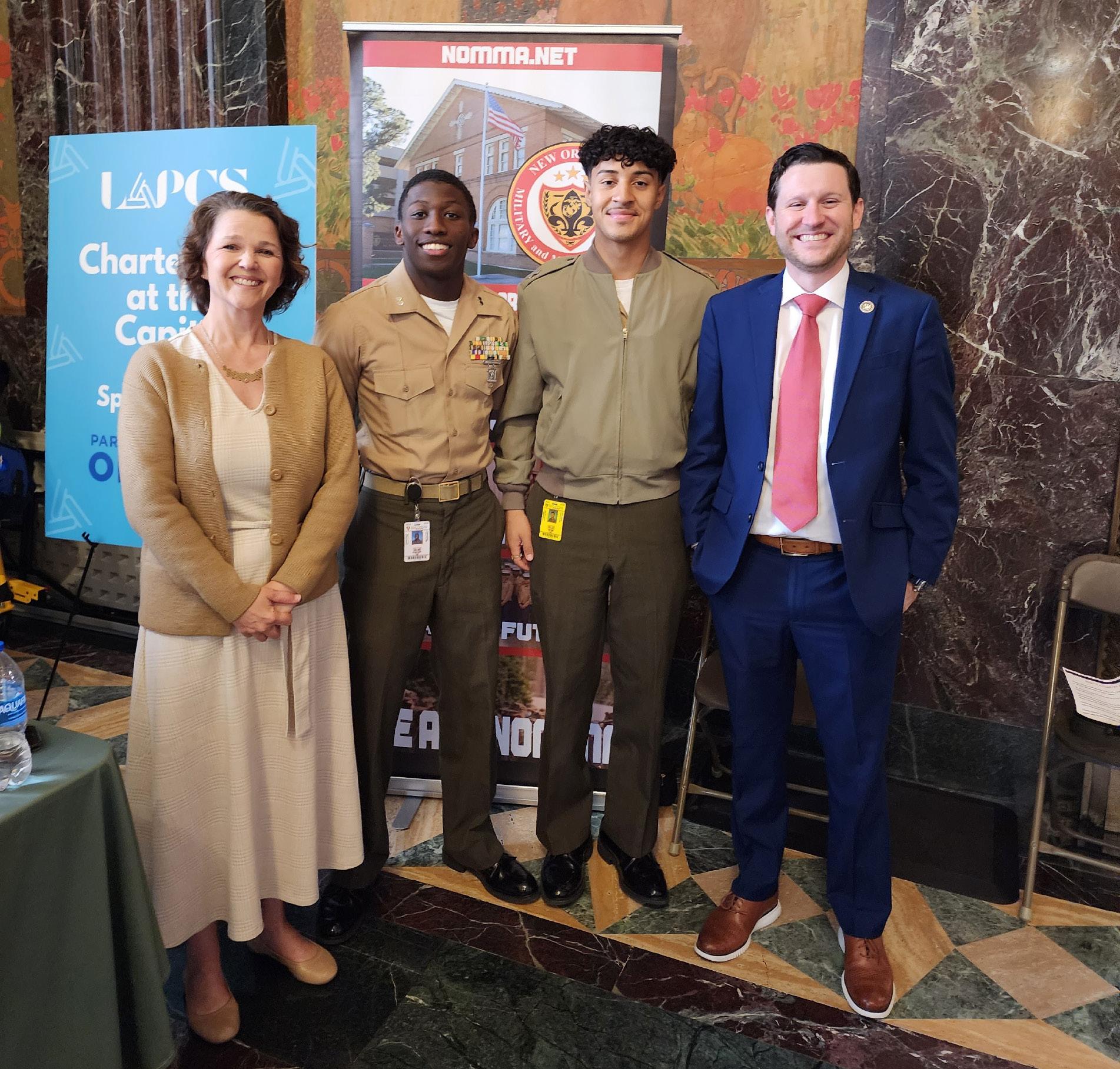
Louisiana Association of Public Charter Schools executive director Caroline Roemer (left) and State Representative Michael Melerine (right) met with students from the New Orleans Military & Marine Academy during Charter Day at the Capitol in March. Several LAPCS-supported bills aimed at modernizing the state’s charter school law were passed during the 2024 session and signed into law by Governor Jeff Landry.
helpful in creating internships and other healthcare pathways for Discovery students to explore. She says several former Discovery Schools students now work for Ochsner, and a few are even teachers at Discovery Schools. “I think we’re really preparing kids for the world that they’re going to live in,” Glaser says.
In addition to bettering the workforce of the future, corporate charter schools offer

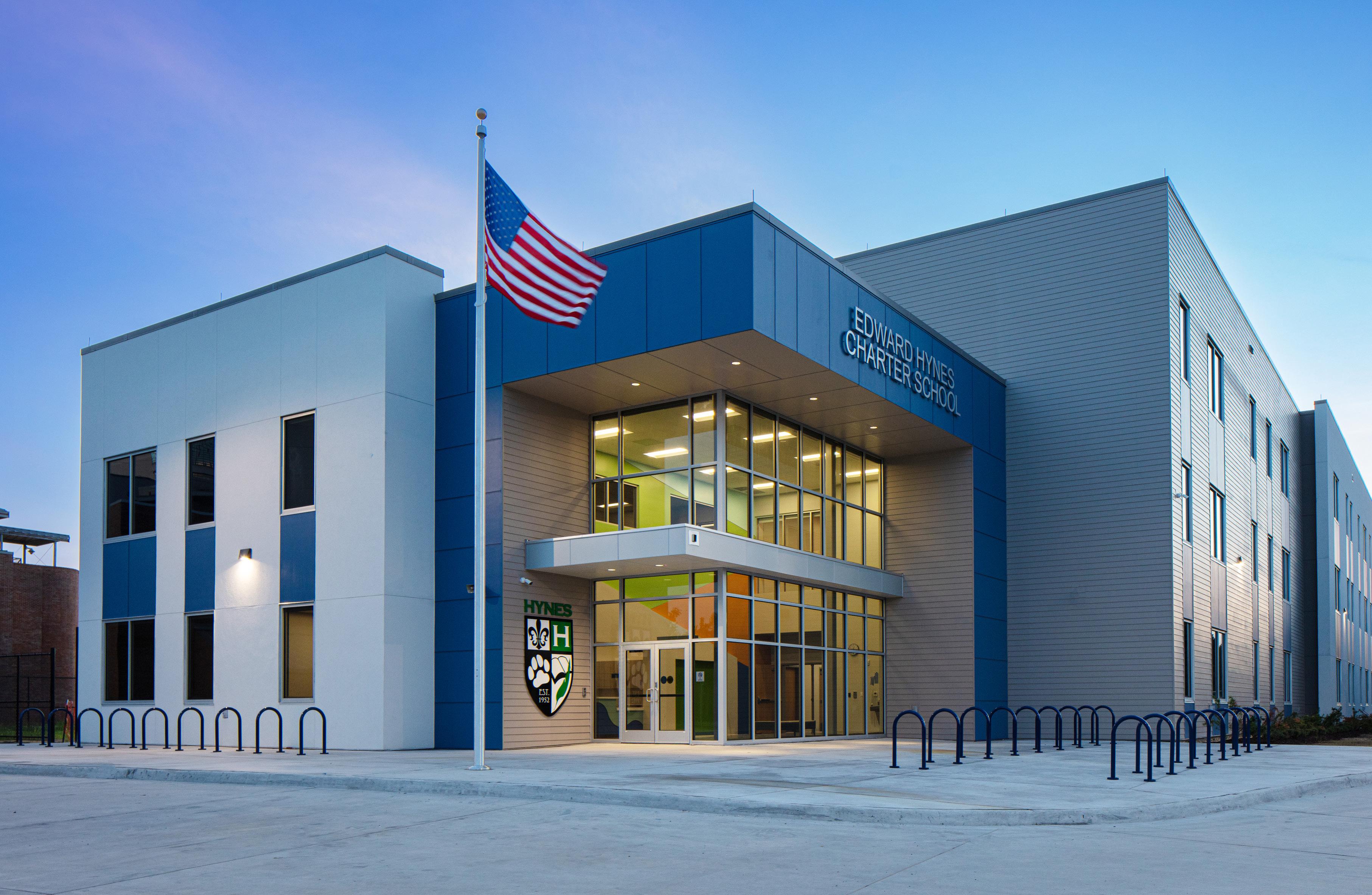

benefits for the workforce of today. With a corporate charter, the corporate partner receives up to 50% of the school’s seats— something Roemer says is often attractive to employees when they are being recruited by a business. “We all know that when you’re recruiting, a lot of times, one of the first things a potential employee will ask about is the schools,” Roemer says.
In June of 2024, Governor Jeff Landry signed a series of pro-charter school bills, including HB 78 authored by Rep. Kim Carver, which allows corporate charter schools to apply directly to BESE for authorization. When a charter is authorized by the state, it can have a statewide enrollment zone.
Because most businesses hire employees from a multi-parish region, this legislation is key in ensuring all of a business’s employees can benefit from a corporate charter school partnership.
While corporate charters are not yet prolific in the state, Roemer says she hopes this pro-corporate partnership legislation will change that. She hopes the new laws will attract the attention of not only educators but the business community. “We hope that they’ll think about what’s possible
when they engage in public education,” she says, “and actually partner with schools to create these very unique opportunities that otherwise would not exist.”
From internships and capstone projects to mission-based learning and future career pathways, corporate charter schools open professional opportunities to students at young ages. Michelle Douglas, founding chief executive officer of the Hynes Charter School Corporation, calls charter schools a “big investment in human capital.”
Through a partnership with the University of New Orleans, students at HynesUNO began their 2024 school year at a brand-new campus located on the university’s grounds. Hynes-UNO hopes to keep
investing in its students by soon securing funds to build a performance and athletic center. “We’re all in this together for the kids,” Douglas says.
Roemer says she’s excited to see how creating more corporate charter partnerships will better serve the needs of a full community. She believes the choices offered by charter schools, as well as the flexibility they afford, can drive greater outcomes for children and create a more sustainable society. “We’re only going to be as great a state as the students that we’re graduating,” she says. “I think we have a lot of work to do, and I think it’s going to take all types of education to do that.”


BY BRE PIZZOLATO
THE SEERSUCKER SUIT and Haspel have been synonymous since John Haspel Sr. founded the company in his native New Orleans in 1909. And while his brand quickly revolutionized the Southern summer social scene, third-generation president and CEO Laurie Lipsey Aronson’s commitment, vision and eagerness to learn has carried the storied men’s clothier into the 21st century.
“I was fortunate enough to have my grandparents on my mom’s side for a long time,” Aronson says. “I grew up watching my grandfather go to work at the factory and traveling to New York. I was well aware of who we were, what that iconic fabric was, and what it meant to the family and the business.”
In addition to her role at Haspel, Aronson is also the third-generation chairwom-
an and CEO of Lipsey’s, the wholesale firearm company her great-grandfather and his uncle founded in 1953. Between both family businesses, she’s got decades of proof showcasing her ability to innovate and substantially grow a mature business.
During a stint in sales and marketing after graduating from Emory University, Aronson says her dad called her at the right time. He offered her an entry-level management job that, today, is represented by a department. “I grew up with [the business], but I didn’t understand it,” she says. “So it was a lot. It was a big learning curve for me. But it got me home, and I never looked back.”
That was in 1993. In 1999, Aronson was promoted to chief operating officer, and in 2002, she became president of both Lipsey’s and Haspel.
“It was a great way for me to come into the company,” she says. “I learned about the business in that role, but I could also learn about our customers. I think that was really my dad’s intent, to have me not just learn about the business but to understand our customers.”
Leading both companies has proven beneficial to both as she carries ideas and lessons learned from one to the other. Making decisions based on a deep understanding of customers is just one of the lessons she learned at Lipsey’s and has also implemented at Haspel. Another is the value of having a team under one roof, she says.
In 2014, Aronson led a complete rebrand of Haspel, adding sportswear and accessories like “man-sized towels” to their offerings. “When we relaunched the brand, we knew seersucker had to be a thread in the DNA of the brand,” she says. “But there were two or three years where I really lost focus on what put us on the map and what made us famous.”
Around that time, she began leaning into the idea of bringing the Haspel team in house and under one roof. And she kept hearing the name Will Swillie. An experienced merchandiser for brands including Ralph Lauren, Stein Mart, Michael Kors and Neiman Marcus, the Baton Rouge native was the perfect fit for Haspel. In 2016, Laurie appointed Swillie as executive vice president.
“We did a total 180 and made seersucker our everything,” she says. “Now we do a lot of things other than seersucker, of course, but I never went back and didn’t ever want to lose sight of the fact that seersucker is not only what we’re known for, but that is who we are, and that’s what makes us so great, and that’s what the company was founded on.”
Today, the brand brings the soul of seersucker to parties year round, offering the premier puckered fabric in a variety of colors, including a limited edition purple and gold for the most dedicated and sophisticated Tiger fans out there, as well as tone-on-tone patterns that are stylish for every season.
Drawing on Swillie’s expertise, Haspel has introduced innovations like a new seersucker blend with 3% elastane, craft-



ed exclusively for the brand by an Italian mill. This isn’t your grandfather’s seersucker. The new fabric is cool, stretchy and undeniably modern while still paying homage to the company’s roots.
“There are different grades, levels and classes of seersucker,” Aronson explains. Seersucker is not the striped pattern. It is a process that puckers the fabric, ultimately pulling it from the body to offer cooling comfort and durability.
“We went to literally the highest level that we knew to go to and found a wonderful mill. And then we added just 3% elastane to it for the stretch so that it’s still a summer fabric. That 3% doesn’t interfere with cotton’s role in keeping cool in the summer, but it added stretch, and that’s something that the man of today really wanted and needed and demanded.”
After all, understanding your customers is key in any business.
Under Aronson’s leadership, Haspel continues to support domestic design while celebrating a heritage that’s equal parts vintage vitality and Southern hospitality.
Aronson isn’t your typical CEO. She’s the first to admit she was no expert in men’s clothing, but her passion for learning and an unwavering trust in her team has fueled Haspel’s continued success.
This year, Haspel celebrates 115 years of continuing a men’s clothing legacy that has outfitted nearly every U.S. president since Calvin Coolidge. For Aronson, learning and changing are all part of the process—a process that has proven successful in not only maintaining but growing both of her family businesses. As she puts it, “It’s been so much fun to innovate.”
BY KELLI BOZEMAN

Bossier City’s Cyber Innovation Center is built to host high-level military and civilian activities
MIKE MCSWAIN HAD just switched off the lights and turned in for the night when inspiration struck. The Shreveport-based architect had been brainstorming concepts for the Cyber Innovation Center when suddenly an idea crystallized.
“I jumped up and told my wife, ‘Hang on, I’ll be right back,’” McSwain recalls. “I grabbed a pencil and sketched the front of this building really quickly. I just didn’t want to lose it.”
That was 2007, and McSwain’s vision would ultimately become the muchbuzzed-about anchor of Bossier City’s new
National Cyber Research Park. Carved out of a cow pasture along I-20, the research park was originally intended to house Air Force Cyber Command for neighboring Barksdale Air Force Base. But when the Air Force downgraded the Cyber Command and decided to station it in San Antonio instead, it was time for a course correction.
“While unfortunate for our community, leadership within the Cyber Innovation Center, Bossier City and Bossier Parish worked tirelessly with Barksdale, state and federal elected officials, and the Department of Defense to support the decision

to place Air Force Global Strike Command at Barksdale,” says CIC president Kevin Nolten of the pivot.
Meanwhile, construction was already underway at CIC. McSwain’s sketch had been tweaked and fleshed out and was being brought to life with a number of symbolic exterior elements meant to evoke the building’s purpose and its connection to Barksdale. Most prominent were the pointy spires that seem to rise out of the ground along one side of the building. “The idea behind that was kind of a symbol of freedom in America,” McSwain explains.

From this vantage point of the main entrance of the CIC, the scale of the spires is even more dramatic. The large canopy was designed to give the feel of being beneath the massive wing of a B-52, with a hole in the canopy symbolizing a connection to the electromagnetic spectrum. Mike McSwain Architect LLC and Prevot Design Services were jointly Architect of Record for the shell and core portion of the CIC; McSwain was the architectural designer for the overall project.
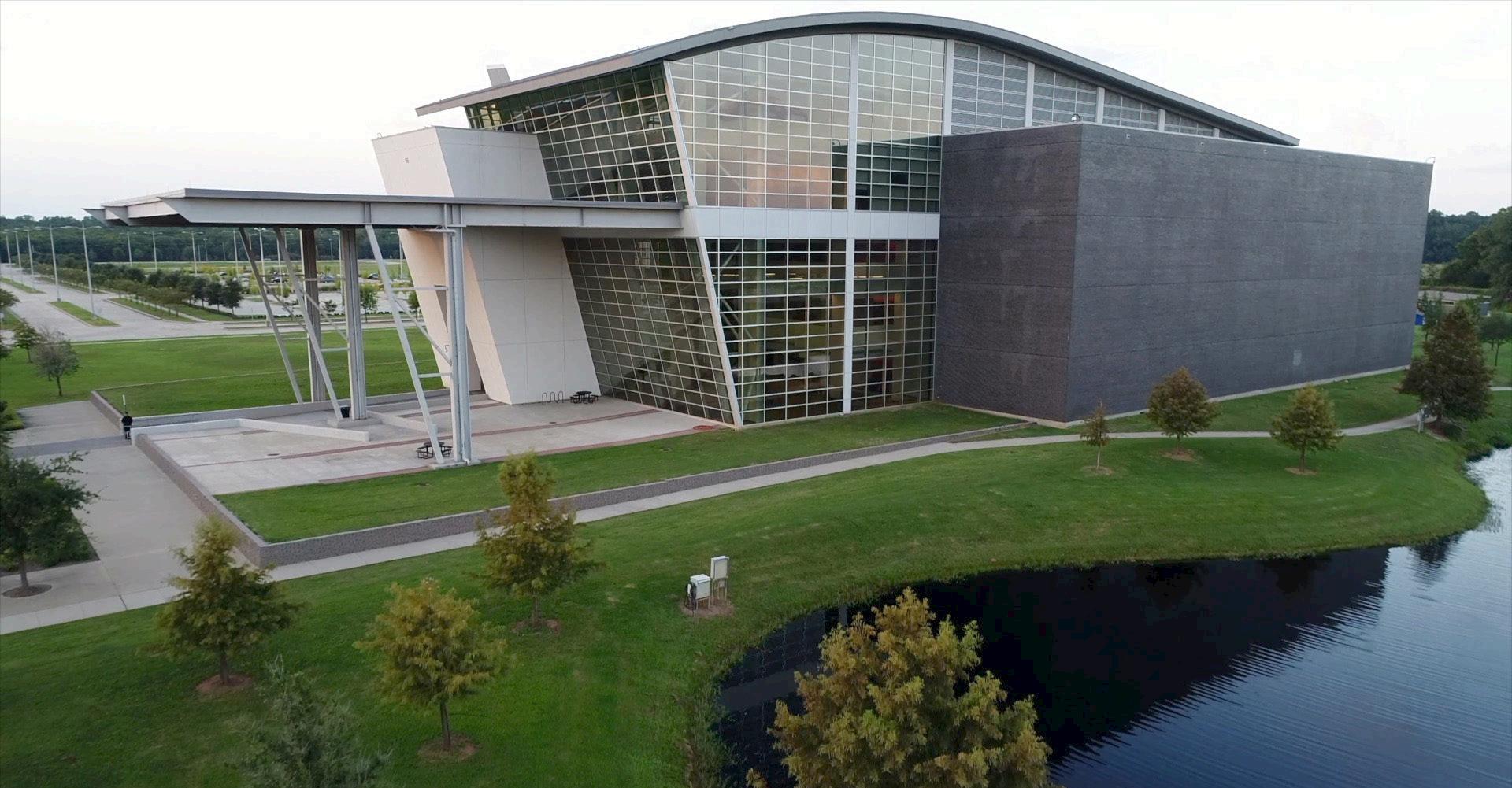
“It came from the crown on the Statue of Liberty, one of our most iconic American symbols, and also from the bones of da Vinci’s illustrations of flying machines.”
The curved roof of the building, along with the large canopy at the front entrance, were designed to represent an airplane wing. “If you’ve ever been on the ground around a B-52, when you get up under the wing, you realize how huge it is and you feel this kind of protection from
everything around you,” McSwain says. “There’s also a big hole in the canopy, and that was meant to be an abstract link to the electromagnetic spectrum, where all things cyber kind of live. We can’t see it, we can’t touch it, but it’s all out there.”
Because of military requirements, the CIC was also constructed with a host of structural protections for the classified information that would be handled within its walls. A large box-shaped section of the
building was constructed without windows and with regulation-mandated technical specifications and anti-terrorism force protection elements in order to safely compartmentalize its secure work areas. “The design of the building was not only meant to look futuristic and give Bossier City a unique icon, but it was also built to meet the strict and stringent requirements to do work with the federal government,” Nolten says. “The CIC is a facility so unique,


you have to travel over 400 miles to find another building like it. This provides a significant competitive advantage for us in bringing a level of jobs to the area that we would otherwise go without because there wouldn’t be a facility to perform that level of work.”
The vacancy left by Cyber Command’s relocation paved the way for Strikewerx, the innovation hub for Air Force Global Strike Command’s Office of the Chief
Scientist, to make its home within the CIC. Strikewerx is described as an Air Force “technology transfer and transition partnership” between CIC and Global Strike Command—a place where some of the Air Force’s toughest tasks are addressed through new problem-solving approaches. The goal is to generate solutions much more quickly than in the past. “Its mission is to connect people and resources across government, industry and academia to



solve Air Force Global Strike Command’s most difficult challenges,” Nolten says.
The Strikewerx area deviates from the black, white and wood tones of the main public areas of the building. Here, McSwain implemented bright colors and adaptable furniture arrangements to promote energy, comfort and interconnectivity among the people who visit for “design sprints” and other working events. “It’s meant to be flexible so they can host small

groups, do presentations, and do whatever they can to support the Air Force,” McSwain says. “It’s a creative, collaborative space.”
Currently underway is a nearly 2,000-square-foot expansion of Strikewerx’s footprint in the form of its new Innovation Lab, which will feature a virtual reality lab, 3D printers, a maker’s space for prototyping, and computers outfitted for modeling and simulation projects. “The
Innovation Lab … will help Airmen define their problems, refine their solutions, and then prototype that solution,” Nolten says.
But Air Force activities aren’t the only notable aspect of the CIC. Its new focus also involves a goal of transforming the local economy by “building a knowledge-based workforce around cyber and information technology,” says Nolten. Supported by a contract with the Department of Homeland Security and now the
The research park’s newest major building is the 78,000-square-foot Louisiana Tech Research Institute, which opened in 2023. Like the CIC, much of this building lacks windows because of its secure work areas, but the architect made up for the lack of daylight with “aggressive” design elements. “It has its own story to tell,” he says.


The second major building constructed in the research park is General Dynamics Information Technology’s 96,000-square-foot Integrated Technology Center. The structure has its own collaborative workspaces and high-tech elements in support of the company’s IT services.
Cybersecurity and Infrastructure Security Agency, the CIC creates K-12 STEM, computer science and cybersecurity curricula and resources for educators around the country through the CYBER.ORG initiative.
A total of nearly 250 people currently work in the CIC, with more than 2,600 employees in the entire NCRP, says Nolten. “Within the next two years, our goal is to double that number to well over 5,000 employees,” he says.
In the years after the CIC opened its doors in 2010, the NCRP has continued on its course toward making Bossier City a hotspot for high-tech work. General Dynamics Information Technology’s Integrated Technology Center building opened in 2016, and an Academic Success Center built in partnership between Bossier Parish Community College and Louisiana Tech University first welcomed students the following year. Most recently, the
Louisiana Tech Research Institute opened in October 2023 through a public-private partnership.
“I would contend that both GDIT and LTRI are somewhat familial to the Cyber Innovation Center in their design,” McSwain says. “I’m really keen on this most recent one we’ve done. I think we pushed a little bit farther with this one. But with all of these, they have meaning to the design. Even if people don’t know the story, they can still feel it, and it moves them somehow, which is part of the goal with all of this.”
Thanks to their proximity to Barksdale, tenants and visitors in all of these buildings have the chance to regularly see and hear B-52 bombers flying just overhead. From the structures’ design to the projects being undertaken inside, it’s a full-circle experience that puts Bossier in a unique position for future growth.
“The CIC has its eyes set on expanding the National Cyber Research Park by working with industry, academia and government to recruit and retain high-quality, high-paying jobs in our community,” says Nolten. “It is my goal that within the next 365 days, the current footprint of National Cyber Research Park will be nearly full. I suspect we will be in the market for additional land to accommodate the continuously increasing demand for space here.”



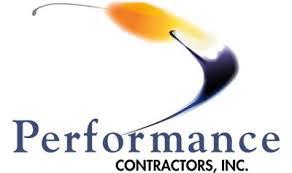





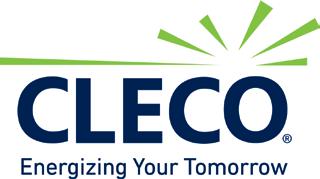
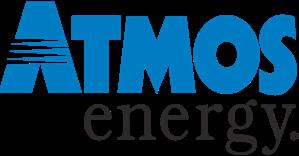




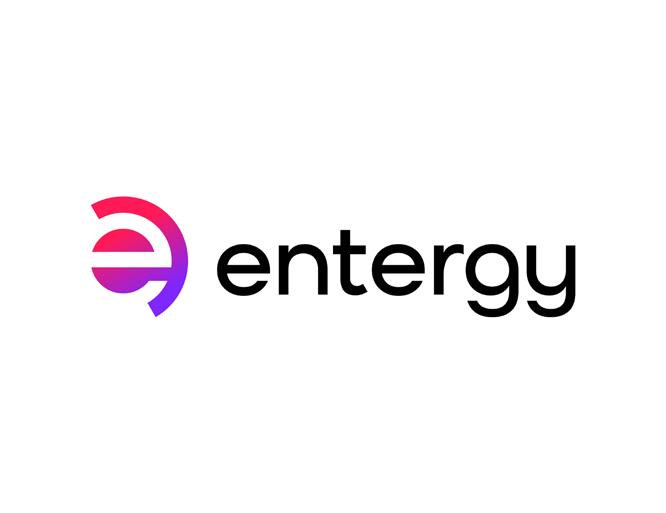




















“We will do something to change the dynamic of education in Louisiana.”
—SEN. RICK EDMONDS ON SB 313
After eight years of stymied growth under former Governor John Bel Edwards, the first regular session of Governor Jeff Landry’s term boasted a barrage of longsought reforms by policymakers and the business community alike. Chief among those were sweeping changes to our state’s education system, from accountability measures to the largest expansion of educational freedom in more than a decade.
Louisiana’s laser focus on literacy has yielded considerable progress—Louisiana is one of three states where average reading achievement in 2023 was
above 2019 levels, and our state is nationally recognized for its comprehensive approach to ensuring students have the foundational reading skills needed to succeed. In the 2024 session, the legislature doubled down on these efforts, expanding two successful initiatives targeting early literacy to include numeracy.
Those policies include screening for early math skills annually in grades K-3 and providing students with additional support to get them back on track. Also passed and signed into law is an expansion of the successful literacy scholarship program, now dubbed the Steve Carter Education Program, which provides supplemental math and reading services for eligible students and increases the scholarship amount per student from $1,000 to $1,500. Even in the face of a potential fiscal deficit next year, lawmakers approved additional funding for these critical programs, showing their dedication to passing legislation that will truly move the needle for Louisiana’s youngest learners.
Likely the most headline-grabbing issue was the passage of legislation setting up the framework for Education Savings Accounts, or ESAs, giving parents more flexibility
in how to educate their children. After facing defeat the last two years, members of both chambers gave the okay to the program with the caveat that it would be subject to legislative appropriation each year—particularly important given the impending roll off of the temporary .45% sales tax next year, leaving a deficit of several hundred million dollars.
Also among the education reform successes was a bill that streamlined the authorization process for corporate charter partnerships, mutually beneficial arrangements in which a business partners with a charter school to provide certain resources to invest in both relevant workforce development for its company and ensure continued investment for the school. These partnerships help attract employees as well as train qualified, skilled future workers while charter schools receive resources such as infrastructure and technology, enrichment activities or internships.
Another key measure expanding school choice was a LABI-backed bill that would have removed the requirement for charter schools to meet certain demographic thresholds relative to total student enrollment. A compromise was

ultimately reached that addressed stakeholder concerns. The final version of the bill provided transparency surrounding the application process, requiring enrollment eligibility and any important application and enrollment dates be available to all applicants and posted on the school’s website.
While this session saw many triumphs in education, lawmakers endorsed an accountability rollback that exempts students who attain certain scores on the English and math sections of the ACT from endof-course testing and allows career diploma students to take WorkKeys or the Armed Services Vocational Aptitude Battery in lieu of the ACT.
LABI stood in opposition to the bill as it conflicts with the new accountability framework for evaluating schools adopted by BESE, which places greater emphasis on college and career readiness while still raising the bar for students, teachers and schools.
LABI opposes any effort to weaken or eliminate public school accountability standards, including rigorous curriculum and statewide testing to measure progress.
In terms of education reform, this session proved to be the most impactful in recent memory, with a multitude of initiatives becoming law that will boost student outcomes. Additionally, critical work is underway at BESE, with new members under Superintendent Cade Brumley’s leadership focusing in on data-driven practices with a track record of success. More work remains to be done, but LABI applauds the great strides taken over the last several months. LABI will continue to emphasize educational excellence as essential for improving the attractiveness of Louisiana as a destination for families, and to prepare the state’s future workforce.
“I believe in public schools and it’s my choice because it works for my kids and it works for my family. But I’m not willing and I’m not ready to tell another parent or another family or a taxpayer that they don’t have that choice when the school in their community is not the best option for their kid, or because of their ZIP code, they are destined to a school that doesn’t perform for them.”
—REP. KIM CARVER ON HB 745

“I can’t close my eyes to the 67% of third graders in public schools who cannot read. I cannot close my eyes to the number of kids living in poverty in our state that are trapped in failing schools... What is the alternative for that child?”
—REP. JASON HUGHES ON HB 745
“My people are looking for economic opportunities, jobs and a better way to stay here in Louisiana. This is not the end-all, be-all—and that’s one of my fears—but it is an approach and a strategy we know can work.”
—REP.
“Following consecutive years of improvement, these latest [LEAP test] scores show students holding steady. With a need to see increased outcomes, however, these numbers substantiate our recent aggressive efforts to simply let teachers teach, provide students with high-dosage tutoring, refresh our school accountability model, and expand options for students to access high-quality schools.”
—SUPERINTENDENT OF EDUCATION DR. CADE BRUMLEY
The Education Recovery Scorecard found that Louisiana is one of three states where average reading achievement in 2023 was above 2019 levels.
The nonprofit organization ExcelinEd recognized Louisiana as one of only three states taking action on all 18 of the organization’s early literacy fundamental principles.
According to the Nation's Report Card, Louisiana is moving up in national education rankings:
• Overall state ranking improved four spots from 46th to 42nd among the states
Fourth graders No. 1 in the nation for reading growth
• Economically disadvantaged fourth graders improved from 42nd to 11th for reading proficiency
• Louisiana K-12 education improved five places from 46th to 40th, the state’s highest ranking ever in this national publication
REP. MICHAEL MELERINE (R-SHREVEPORT)
This bill prohibits the use of an appeals process for certain students who fail to pass stateadministered tests required for high school graduation. A vote FOR the bill was a vote WITH LABI.
SENATE VOTE // FINAL PASSAGE: 24-10
REP. KIM CARVER (R-MANDEVILLE)
This bill cuts the red tape in the authorization process for charter schools with corporate partners, allowing the school to go directly to BESE for approval as a Type II charter school. A vote FOR the bill was a vote WITH LABI
HOUSE VOTE // FINAL PASSAGE: 90-13
SENATE VOTE // FINAL PASSAGE: 26-10
REP. BARBARA FREIBERG (R-BATON ROUGE)
This bill, as approved by the House, removed the requirement for charter
schools to meet certain demographic thresholds relative to total student enrollment. LABI supported the compromise amendments brought by Sen. Franklin Foil (R-Baton Rouge) in the Senate, which were crafted with stakeholder input to provide transparency on application information, enrollment eligibility and application and enrollment dates. A vote FOR the bill was a vote WITH LABI.
HOUSE VOTE // FINAL PASSAGE: 66-33
SENATE VOTE // FINAL PASSAGE: 30-7
SEN. EDDIE LAMBERT (R-GONZALES)
Despite compromise amendments to HB 708, another set of amendments was offered that lowered the threshold to 70%— down from 85% under current law—rather than removing the quota altogether. A vote AGAINST the amendment was a vote WITH LABI.
SENATE VOTE // AMENDMENT #4181: 22-15
REP. JULIE EMERSON (R-CARENCRO)
This bill would have created and provided the framework for the LA GATOR Scholarship Program, a universal school choice program. A vote FOR the bill was a vote WITH LABI.
HOUSE VOTE // FINAL PASSAGE: 72-32
REP. DENNIS BAMBURG (R-BOSSIER CITY)
This bill removes the requirement for students to take the ACT and now allows them to take either WorkKeys or the Armed Services Vocational Aptitude Battery in its place. A vote AGAINST the bill was a vote WITH LABI.
SENATE VOTE // FINAL PASSAGE: 31-5
HOUSE VOTE // CONFERENCE COMMITTEE REPORT: 55-46
REP. LARRY BAGLEY (R-STONEWALL)
This amendment would have added
burdensome testing mandates for schools opting to participate in the program—placing unreasonable expectations and reporting requirements on non-public schools. A vote AGAINST the amendment was a vote WITH LABI.
HOUSE VOTE // AMENDMENT #5203: 38-59
SEN. RICK EDMONDS (R-BATON ROUGE) —and— Amendment #3749
SEN. KIRK TALBOT (R-RIVER RIDGE)
This bill creates the framework for an Education Savings Account (ESA) program, the LA GATOR Scholarship Program. Amendment #3749 added several of the provisions of HB 745 by Rep. Emerson to SB 313. A vote FOR the bill/ amendment was a vote WITH LABI.
SENATE VOTE // AMENDMENT #3749: 25-14
SENATE VOTE // FINAL PASSAGE: 24-15
HOUSE VOTE // FINAL PASSAGE: 68-28
Another year, another failed attempt to rein in the abusive lawsuits that have been driving business out of Louisiana for decades. Perhaps the biggest vestige remaining from the Edwards administration are the deep-rooted ties to billboard lawyers—who contribute heavily to political campaigns to ensure Louisiana’s legal climate continues to work in their favor.
As a property insurance crisis has left Louisianans with fewer options and higher costs, new Insurance Commissioner Tim Temple put forth a package of bills aimed at holistically addressing the Louisiana laws that are driving insurers out of our state and driving up insurance costs.
The Legislature took swift action to bring property insurance laws in line with other states to incentivize more insurers to the market, with the ultimate goal of competition driving down insurance costs. These included a phase out of the threeyear rule for property insurance an issue that carriers have identified as a major impediment to investment in Louisiana—and a bill that shifts Louisiana from “prior approval” to “file in use” to afford insurers greater flexibility to price their product and remove another
burden that slows down the rate adjustment process.
A bill establishing a process for good faith and fair dealing in the claims process was also passed and signed into law, removing numerous ambiguities in the law that hinder a swift claims resolution. This package of bills aimed at tackling the property insurance crisis has already drawn the eye of insurers and reinsurance companies, a positive signal that improving the legal and regulatory environment relative to insurance will help bring more competition to the market.
While the governor signed into law a property insurance reform package, the auto insurance crisis was largely left unaddressed—despite a bill winning approval from both chambers only to be vetoed by the governor. The businesses and citizens of Louisiana deserve better and LABI will continue to fight for a fair and balanced justice system.

“I’ll
be part of any future measure to actually bring down insurance costs because this is an economic development initiative.”
—SEN. HEATHER CLOUD ON HB 423
Make no mistake: without holistic reform that address both property and auto insurance, we will continue to see insurers flee this state in favor of those with better business climates—leaving the only insurance option for policyholders to be financially crippling.
Louisiana state laws perpetuate a culture of “sue first, ask questions later,” rather than going through the insurance claims process as it was intended. Filing a lawsuit should not be the first step in the claims process—it should be reserved for cases when the circumstances warrant it.
Killed before it could reach a Floor vote in the Senate was a repeal of what’s known as the “Housley Presumption.” A critical issue in any personal injury case is the recovery of damages for injuries that were actually caused by the accident. The Housley presumption presumes a causal relationship between an accident and subsequent injury without any evidence demonstrating that correlation. This legislation would have repealed the judicially created presumption and required that the plaintiff actually prove causation between the accident and injuries, providing fairness and balance by restoring a plaintiff’s duty to prove damages in their case.
Clearing the Legislature over LABI’s opposition was an extension of the time a plaintiff can file a lawsuit from one to two years, known as the prescriptive period. LABI has historically opposed extending the statute of limitations on personal injury claims—a priority bill for Governor Landry— absent other protections to balance the burden this would place on defendants, such as requiring the plaintiff to notify their insurer if they intend to pursue legal action upon receiving accident-related medical treatment. In a vacuum, extending the amount of time to file a lawsuit will not address our insurance crisis, as
consideration of the severity of claims and the frequency of claims must occur to bring insurers back to Louisiana’s market.
One key piece of the package of bills put forth by Insurance Commissioner Temple that was signed into law was a repeal of Louisiana’s direct action statute, which allowed an insurer to be named in a lawsuit. The bill preserves the right to name an insurer only in limited circumstances, such as when the insured is insolvent or deceased. Prior to passage, Louisiana was one of only three states that allowed direct action against an insurer.
Also clearing the legislative process after being vetoed by former Gov. John Bel Edwards last year was a bill requiring the disclosure of all third-party litigation funding agreements. Third-party litigation financing allows hedge funds, sovereign or foreign wealth funds and other financiers to invest in lawsuits in exchange for a percentage of any settlement or judgment, which gives them an anonymous stake in the outcome of a case. Prior to the passage of this bill, these funding arrangements were cloaked in secrecy, leaving the opposing party in the dark about third parties who may have a stake in the financial outcome of the litigation. This new law will ensure transparency while maintaining access to these financing arrangements for civil proceedings, and importantly prohibits a third party from having any influence or control over negotiations and settlement decisions in state court cases.
LABI will continue to work with all stakeholders to enact commonsense solutions that rein in abusive lawsuits and make Louisiana more competitive.

Louisianans file personal injury claims after an accident occurs at a rate almost twice the national average
The number of property damage liability claims per 100 insured vehicles in Louisiana is 16% higher than the national average
Average annual premium for full coverage auto insurance in Louisiana
$3,606
ALMOST DOUBLE THE NATIONAL AVERAGE
Louisiana is one of only 11 states that follow what’s called the “pure comparative negligence rule,” meaning that a plaintiff may still recover damages even if they are found to be equal to or more at fault than the defendant in an accident

BY REP. MIKE JOHNSON (R-PINEVILLE)
This bill increases the prescriptive period for civil lawsuits from one to two years. A vote FOR the bill was a vote AGAINST LABI.
HOUSE VOTE // FINAL PASSAGE: 83-18
SENATE VOTE // FINAL PASSAGE: 28-9
BY REP. EMILY CHENEVERT (R-BATON ROUGE)
This bill required the disclosure of any litigation financing contract or agreement under which anyone other than a legal representative has received or has a right to receive compensation contingent on any proceeds of the civil action. A vote FOR the bill was a vote WITH LABI.
HOUSE VOTE // FINAL PASSAGE: 84-17
HB 337
BY REP. JACK MCFARLAND (R-JONESBORO)
This bill repeals the state’s direct action statute and preserves the right to name an insurer only in limited circumstances, such as when the insured is insolvent or deceased. A vote FOR the bill was a vote WITH LABI.
HOUSE VOTE // FINAL PASSAGE: 86-15
SENATE VOTE // FINAL PASSAGE: 39-0
BY REP. MICHAEL MELERINE (R-SHREVEPORT)
—and—
BY SEN. ALAN SEABAUGH (R-SHREVEPORT)
This bill would have revised what’s known as the “collateral source” rule. As originally drafted and voted on in the House, the bill would have limited medical expense recovery to the amount actually paid. The amended version of the bill—a compromise among stakeholders—provided courts with the flexibility to award additional damages up to 30% of the difference between the amount paid and the amount billed. It also allowed all evidence of medical expenses to be admissible. Under current law, a claimant receives 40% of the difference between paid and billed amounts automatically. This bill, as amended, would have allowed juries to see both the “sticker price” of medical bills and the amount that the insurance company or plaintiff actually paid and would have given the court much-needed discretion in determining whether to award the additional 30%. The bill was ultimately vetoed by the governor.
A vote FOR the bill/ amendment was a vote WITH LABI.
HOUSE VOTE // FINAL PASSAGE: 88-10
SENATE VOTE // AMENDMENT #4001: 23-16
SENATE VOTE // FINAL PASSAGE: 25-14
BY
SEN. JEREMY STINE (R-LAKE CHARLES)
— and — Amendment #4667
BY REP. GABE FIRMENT (R-POLLOCK)
As amended in the House, this bill provides for the disclosure of all third-party litigation funding agreements, but the agreement will be discoverable rather than an automatic disclosure. This bill will bring these types of agreements out of the dark and shed light on previously unknown ethical conflicts, allowing opposing parties to know who may have a financial stake in the outcome of litigation. Importantly, the bill also prohibits a third party from having any influence or control over negotiations and settlement decisions in state court cases. A vote FOR the amendment/conference committee report was a vote WITH LABI.
HOUSE VOTE // AMENDMENT #4667: 64-30
SENATE VOTE // CONFERENCE COMMITTEE REPORT: 39-0
“This is 100% about our constituents, about giving our constituents choices and about allowing the free market to work.”
—REP. GABE FIRMENT ON HB 611
“The one thing that we know for a fact is that if we don’t do anything, it’s going to keep getting worse. We’re worst in the nation highest rates in the nation. Why? Because we’ve only tried twice in the last 40 years to fix it. We’ve got to do something.”
—SEN. ALAN SEABAUGH ON HB 423
A LABI sponsored package aiming to bring Louisiana’s workers’ compensation system in line with other states was stalled on the Senate Floor, including legislation that would reduce litigation and ultimately reduce overall system costs. National data shows that workers’ compensation claims costs—including disability benefits, medical payments, and administrative costs—are far higher in Louisiana compared to other states’ workers’ compensation systems. Injured workers in Louisiana are off work substantially longer than their counterparts in other states. Lawyers are involved more often and at a greater cost. The LABI-supported package sought common-sense reforms to our workers’ comp system that would reduce unnecessary lawsuits and expedite return to work, while providing fair compensation to injured workers.
Among the three employee relations bills scored, one aimed to simplify the calculation of an injured worker’s “average weekly wage” (AWW), removing ambiguity and uncertainty by defining AWW to mean the average compensation paid each week by the employer to
the injured employee. The new calculation would have aligned Louisiana with the plurality of states using a 52-week calculation. It would have been fairer and more predictable, leading to fewer disputes and lower litigation costs. The bill stalled on the Senate Floor, along with a measure that would have expedited the claims investigation process by requiring employees to sign and return medical releases so their employer can fully investigate the claim and confirm compensability. This bill used existing processes to allow employers to suspend benefits when employees fail to sign and return a medical release, but also provided for fast and retroactive resumption of benefits once the employee complied.
Also scored was legislation seeking to place reasonable limits on punitive attorney fees, shutting down the litigation money pipeline that only serves to drive unnecessary disputes that delay the resolution of claims. It would have provided reasonable employers an opportunity to correct mistakes quickly, without being exposed to punitive penalties and attorney fees. Unfortunately, this bill died in the Senate Labor Committee.
HB 529
BY REP. RAYMOND CREWS (R-BOSSIER CITY)
This bill would have provided for a fair and predictable calculation of workers’ compensation claimants’ average weekly wage, leading to decreased litigation, ultimately reducing overall system costs. A vote FOR the bill was a vote WITH LABI.
HOUSE VOTE // FINAL PASSAGE: 64-34
According to the Workers’ Compensation Research Institute, Louisiana employers pay among the highest total costs per workers’ compensation claim in the country. Similarly, the National Council on Compensation Insurance found that Louisiana pays substantially higher indemnity and medical benefits compared to Texas, Arkansas and Mississippi. Not coincidentally, the WCRI annual CompScope™ study found that the rate at which Louisiana workers hire attorneys is 50% higher than the median state.
HB 618
BY REP. BEAU BEAULLIEU (R-NEW IBERIA)
This bill would have introduced efficiency in the workers’ compensation claims process by allowing employers access to complete medical information while ensuring employees’ right to privacy. A vote FOR the bill was a vote WITH LABI.
HOUSE VOTE // FINAL PASSAGE: 67-32
HB 703
BY REP. MICHAEL MELERINE (R-SHREVEPORT)
This bill would have placed reasonable limits on punitive attorney fees. It also amended the law to restore employers full access to OWC courts, and resolved technical issues in the OWC’s “preliminary determination/safe harbor” process. A vote FOR the bill was a vote WITH LABI.
HOUSE VOTE // FINAL PASSAGE: 64-35
As the Legislature looks toward a fiscal session and looming fiscal cliff with the expiration of the .45 sales tax next year, LABI supported several reforms to state government that would make Louisiana more attractive for business.
Chief among these was a measure that would provide the Legislature more flexibility to overhaul our complex tax structure next session, among other key challenges that have held our state back for generations: a bill calling for a limited constitutional convention. Legislation setting up the framework for a constitutional convention in time to be placed on the November ballot was ultimately blocked in the Senate, but will certainly continue to be a hot topic.
LABI applauds the House of Representatives for supporting this effort to restructure the Constitution to give legislators flexibility in changing the laws that hold our state back. Unfortunately, the bill stalled in the Senate, so other states continue to surge in population and economic growth as they reap the benefits from Louisiana's people and businesses fleeing the state for a more prosperous future. While a limited convention may still be on the horizon leading up to the fiscal session next year, it appears a comprehensive restructuring of the constitution will have to wait.
A major and much-needed shakeup of occupational licensing and administrative rules and regulations occurred this spring
with lawmakers enacting several measures that will be game changers for businesses and entrepreneurs across the state. The passage of a bill providing for the universal recognition of occupational licenses will remove a significant barrier to employment and make Louisiana more appealing to out-of-state workers looking to relocate.
Another impediment to attracting and retaining businesses is Louisiana’s overly burdensome regulatory climate—considered a key priority in LABI’s LA Driven agenda. LABI’s LA23 strategic plan, now the movement known as LA Driven, notes the regulatory environment as a particular area of concern for Louisiana, making a recommendation that our state reduce the quantity of regulations while ensuring the quality of the regulations remaining. Arizona is a prime example of how to get it done. Arizona’s state agencies underwent a regulatory overhaul several years ago as a result of two key moves: a moratorium on new regulations by then-Gov. Doug Ducey through executive order and the implementation of a five-year regulatory review for each state agency. Through this review, each agency submits a detailed report on all administrative rules and regulations, noting which rules were onerous, duplicative, or unnecessary that could be eliminated to help facilitate a business climate more conducive to growth. This review process will now be implemented in Louisiana as a result of legislation passed and signed by the governor.
“We allow ourselves to make bold changes for the state of Louisiana, or we will keep getting the same results that we’ve been getting year after year... actually, generation after generation.”
—REP. BEAU BEAULLIEU ON HB 800
“We can talk about politics all we want, but to me, I just have an opportunity to live, to work and to retire in our wonderful state.”
—SPEAKER DEVILLIER ON HB 800
BY REP. BEAU BEAULLIEU (R-NEW IBERIA)
This bill would have created the framework of a constitutional convention.
LABI has long supported simplifying the state’s Constitution, which locks up measures most states would place in statute, tying the hands of the legislature to make many of the much-needed reforms that will move Louisiana forward. A vote FOR the bill was a vote WITH LABI.
HOUSE VOTE // FINAL PASSAGE: 75-27
Several bills restructuring government agencies to improve efficiencies and streamline operations were passed and signed by the governor, including legislation that revamps the Louisiana Economic Development (LED) agency’s organization, eliminating onerous regulations that impede the department’s ability to move at the speed of business. Another of LABI’s priorities included a requirement for the secretary of the Louisiana Workforce Commission to coordinate the removal of workforce silos and create a cohesive system, executing a statewide vision and being held accountable for the outcome. Also on the workforce development front was a bill bringing the MJ Foster Promise Program under the umbrella of the LWC, to ensure the program is aligned with the state’s workforce development priorities. All of these measures ensure Louisiana’s economic engine is running smoothly and serving citizens efficiently.
In addition to workforce development initiatives aimed at agency improvement, LABI prioritized efforts to provide formerly incarcerated individuals with the tools they need for a successful return to society, boosting the economy while also reducing recidivism. Those measures include a requirement for the Department of Public Safety & Corrections to offer GED training and at least one vocational training program for inmates. A similar bill focuses on academic and transitional plans for children under the supervision of the Department of Public Safety and Corrections. Current law requires the department to submit individualized learning plans to the court, but this bill expands
the law to require those plans to include vocational training.
LABI supports these efforts to address talent supply shortages by providing access to skills training to juvenile offenders and adult inmates. Successful reentry relies heavily on securing employment post-release, and numerous studies have shown that vocational training for incarcerated populations pays dividends by reducing recidivism and reducing crime rates. Tapping into this diverse and often overlooked talent pool can have far-reaching positive impacts on the Louisiana economy by boosting workforce participation, which in turn has a ripple effect for safe, thriving communities and a favorable business climate for the companies operating within them.
LABI also supported a bill lowering the eligibility age for the MJ Foster Promise Program from 21 to 17, and expanding access to the formerly incarcerated. Unfortunately, the provision expanding this program to ex-offenders was stripped in Committee. LABI opposes restricting formerly incarcerated individuals’ access to vocational training and education. Making this investment through the MJ Foster Program would have saved taxpayers hundreds of thousands of dollars, ultimately reducing crime and recidivism. While LABI is disappointed the Senate did not restore this portion of the original bill, lowering the eligibility age remains a good first step in expanding access to educational resources and vocational training. LABI will continue to advocate for meaningful second chance employment opportunities for the formerly incarcerated.
More than 80 million Americans have a criminal record. Nearly 75% of people who were formerly incarcerated remain unemployed a year after being released.
According to research from the SHRM Foundation, 85% of human resource (HR) professionals and 81% of business leaders report that individuals with criminal records perform the same as, or better than, employees without criminal records.
According to research from JPMorgan Chase, employment challenges that leave individuals with a criminal record unemployed or underpaid cost the U.S. economy between $78 and $87 billion every year.
Carbon capture again took center stage in the energy space this year, with efforts focused on setting up regulatory and administrative frameworks for this critical industry, as well as staving off attempts to block CCS project development in Louisiana. At LABI, we recognize that Louisiana is wellpositioned to be in the vanguard of this new wave of projects and is poised to have our economy enjoy unique and substantial benefits from new project development that involves a carbon capture and
sequestration (“CCS”) component – projects that will put more people to work while at the same time allowing Louisiana’s energy industry to continue to operate while reducing its carbon footprint. Recognizing the chilling effect a moratorium would have on planned investments and the new jobs associated therewith, LABI worked proudly with our fellow trade and coalition partners to ensure every opportunity to put our citizens to work in good, high-paying jobs was maintained in this state.
Additionally, LABI and our coalition partners successfully fended off costly mandates for Louisiana facilities, including excessive air quality monitoring. Also of note, the legislature passed a reduction of severance tax rates on oil and gas produced from inactive wells

and orphan wells. A similar phase down of the severance tax on oil stalled in the Senate Revenue and Fiscal Affairs Committee. Rounding out our energy highlights this session was the unfortunate missed opportunity to provide hope for Louisiana’s oil and gas job creators who continue to feel the ripple effects of frivolous legacy lawsuits. The legislation would have addressed remediation for legacy lawsuits, providing clarity to all parties of their respective obligations and preserving the right to recover damages only in cases where clear and convincing evidence is provided. While this bill died on the Senate calendar, LABI and our partners will continue to defend against costly coastal and legacy litigation that has directly contributed to the decline of the energy sector in Louisiana.

Also worth noting are the numerous pieces of legislation on LABI’s list of “LA Driven-Approved” bills that have now become law or are set to be studied by the legislature. While many did not get scored this year, the importance of these key bills cannot be understated as they all set Louisiana on a path to a prosperous future. The heightened focus by the legislature and new secretaries in LED and the LWC on workforce alignment and education will ensure Louisianans are
prepared for the jobs of the future. Some of those key priorities (such as uniting all workforce initiatives under the LWC) are mentioned above, while others don’t fit the typical mold of LABIsupported legislation, like a trio of bills aimed at giving individuals released from incarceration access to birth certificates and other important documentation, removing a significant barrier to obtaining housing and employment upon release.
70% of inmates cannot read above a 4th grade level.
22 states have laws aimed at helping previous offenders get identification either at release or immediately following. Louisiana was the most recent addition to that list, providing access to identification documents to both juveniles and adults leaving the justice system.
*National Conference of State Legislatures
Another measure created a mental health transition pilot program to pair soon-to-be-released inmates with mental health services upon release. Integrating mental health services into transition programs for prisoners can remove another barrier to successful reentry. Also of note, the Community Responder Task Force was created to study the implementation of a partnership among law enforcement agencies, behavioral health providers and hospitals, to safely resolve mental health-related crises by individuals or teams of individuals specifically trained to respond to behavioral crises where no crime has occurred.
All told, more than 50 LADriven-approved measures were enacted, addressing key recommendations outlined in LA23. We’re making good time on the road to Louisiana’s ultimate destination—Louisiana as an economic driver in the South. LABI’s top-notch policy and political advocacy operations continue delivering results at the Legislature, BESE and within the Governor’s Administration, but that’s only part of the LA Driven journey. LABI will continue to measure success and outcomes to ensure accountability, identify progress and roadblocks of concern, and report this progress to policy makers and stakeholders to ensure we’re staying on course in implementing LA Driven.
Approximately half the people in U.S. jails and over one third of the population of U.S. prisons have been diagnosed with a mental illness.
Visit LADRIVEN.org to see how you can get involved.

HOUSE
REP. BARBARA FREIBERG
REP. DIXON MCMAKIN
REP. MICHAEL MELERINE
REP. ZEE ZERINGUE
95%
93%
93%
92%




REP. BARBARA FREIBERG DISTRICT 70

REP. DIXON MCMAKIN DISTRICT 68

REP. MICHAEL MELERINE DISTRICT 6

REP. ZEE ZERINGUE DISTRICT 52




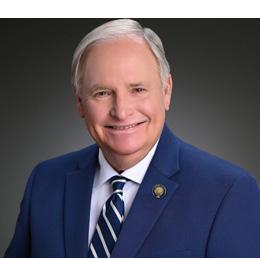


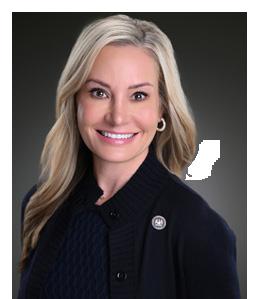





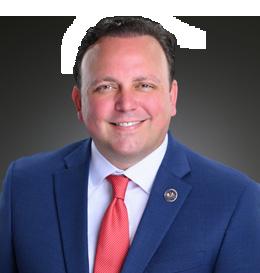
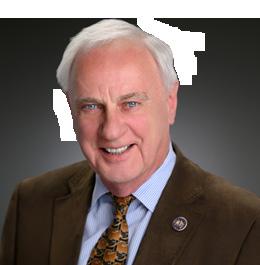
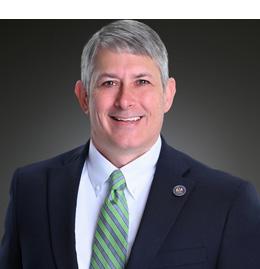



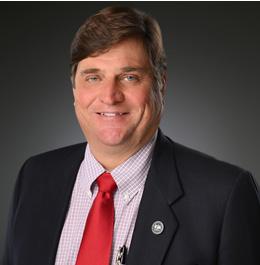


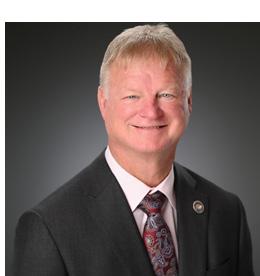



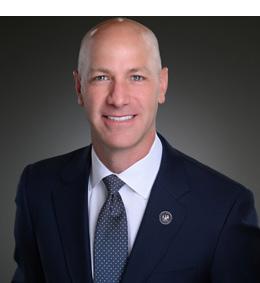
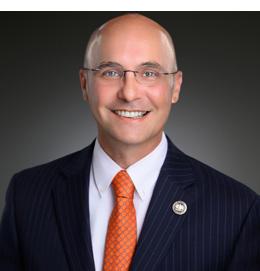


SENATE HOUSE
SEN. HEATHER CLOUD
DISTRICT 28 88%
SEN. HEATHER CLOUD DISTRICT 28 88%
SEN. STEWART CATHEY
DISTRICT 33 85%
SEN. STEWART CATHEY DISTRICT 33 85%
SEN. MICHAEL FESI
SEN. MICHAEL FESI
DISTRICT 20 85%
DISTRICT 20 85%
SEN. BOB HENSGENS
SEN. BOB HENSGENS
DISTRICT 26 85%
DISTRICT 26 85%
SEN. VALARIE HODGES
SEN. VALARIE HODGES
DISTRICT 13 85%
DISTRICT 13 85%
SEN. CALEB KLEINPETER
SEN. CALEB KLEINPETER
DISTRICT 17 85%
DISTRICT 17 85%
SEN. MIKE REESE
SEN. MIKE REESE
DISTRICT 30 85%
DISTRICT 30 85%
SEN. JEREMY STINE
SEN. JEREMY STINE
DISTRICT 27 85%
DISTRICT 27 85%
SEN. ADAM BASS
SEN. ADAM BASS
DISTRICT 36 83%
DISTRICT 36 83%
SEN. WILLIAM WHEAT
SEN. WILLIAM WHEAT
DISTRICT 37 83%
DISTRICT 37 83%
SEN. MARK ABRAHAM
SEN. MARK ABRAHAM
DISTRICT 25 82%
DISTRICT 25 82%
SEN. CAMERON HENRY
SEN. CAMERON HENRY
DISTRICT 9 80%
DISTRICT 9 80%
REP. DENNIS BAMBURG
REP. DENNIS BAMBURG
DISTRICT 5 88%
DISTRICT 5 88%
REP. BETH BILLINGS
REP. BETH BILLINGS
DISTRICT 56 88%
DISTRICT 56 88%
REP. BRYAN FONTENOT
REP. BRYAN FONTENOT
DISTRICT 55 88%
DISTRICT 55 88%
REP. JEFF WILEY
REP. JEFF WILEY
DISTRICT 81 88%
DISTRICT 81 88%
REP. TONY BACALA
REP. TONY BACALA
DISTRICT 59 86%
DISTRICT 59 86%
REP. STEPHANIE BERAULT DISTRICT 76 85%
REP. STEPHANIE BERAULT
DISTRICT 76 85%
REP. KIMBERLY COATES DISTRICT 73 85%
REP. KIMBERLY COATES
DISTRICT 73 85%
REP. DARYL DESHOTEL DISTRICT 28 85%
REP. DARYL DESHOTEL
DISTRICT 28 85%
REP. JESSICA DOMANGUE DISTRICT 53 85%
REP. JESSICA DOMANGUE
DISTRICT 53 85%
REP. KATHY EDMONSTON DISTRICT 88 85%
REP. KATHY EDMONSTON
DISTRICT 88 85%
REP. JULIE EMERSON DISTRICT 39 85%
REP. JULIE EMERSON
DISTRICT 39 85%
REP. FOY GADBERRY DISTRICT 15 85%
REP. FOY GADBERRY
DISTRICT 15 85%
REP. TROY HEBERT DISTRICT 31 85%
REP. TROY HEBERT DISTRICT 31 85%
REP. DODIE HORTON DISTRICT 9 85%
REP. DODIE HORTON DISTRICT 9 85%
REP. TIM KERNER DISTRICT 84 85%
REP. TIM KERNER DISTRICT 84 85%
REP. JACOB LANDRY DISTRICT 49 85%
REP. JACOB LANDRY DISTRICT 49 85%
REP. CHUCK OWEN DISTRICT 30 85%
REP. CHUCK OWEN DISTRICT 30 85%
REP. RODNEY SCHAMERHORN DISTRICT 24 85%
REP. RODNEY SCHAMERHORN
DISTRICT 24 85%
REP. FRANCIS THOMPSON DISTRICT 19 85%
REP. FRANCIS THOMPSON
DISTRICT 19 85%
REP. JACK MCFARLAND DISTRICT 13 84%
REP. JACK MCFARLAND
DISTRICT 13 84%
REP. TROY ROMERO DISTRICT 37 84%
REP. TROY ROMERO
DISTRICT 37 84%
REP. PHILLIP DEVILLIER DISTRICT 41 83%
REP. PHILLIP DEVILLIER DISTRICT 41 83%
REP. KELLEE DICKERSON DISTRICT 64 83%
REP. KELLEE DICKERSON
DISTRICT 64 83%
REP. BEAU BEAULLIEU DISTRICT 48 80%
REP. BEAU BEAULLIEU
DISTRICT 48 80%
REP. RYAN BOURRIAQUE DISTRICT 47 80%
REP. RYAN BOURRIAQUE
DISTRICT 47 80%
REP. RHONDA BUTLER DISTRICT 38 80%
REP. RHONDA BUTLER DISTRICT 38 80%
REP. WAYNE MCMAHEN DISTRICT 68 80%
REP. WAYNE MCMAHEN DISTRICT 68 80%
REP. CHRIS TURNER DISTRICT 12 80%
REP. CHRIS TURNER DISTRICT 12 80%
REP. JOHN WYBLE DISTRICT 75 80%
REP. JOHN WYBLE DISTRICT 75 80%


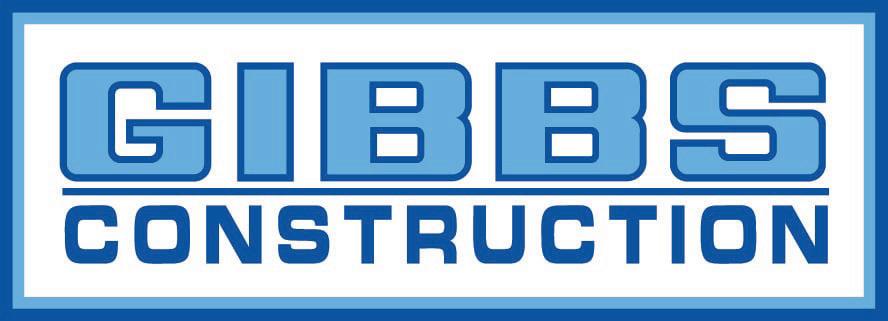

TOM COX Founder & Executive Chairman
For us, being a LABI member is a crucial aspect of doing business in Louisiana. It should go without saying that the state can’t achieve lasting prosperity without a robust business climate. LABI’s well-researched e orts in supporting pro-growth policies act as a catalyst for economic success, working to reduce government obstacles & foster an environment where businesses can prosper.
CEO
What I love most about LABI is that anyone can have influence. We are a one voice, one vote kind of place. If you are passionate about business policy and want to have your voice heard, join LABI. Your investment is money well spent and you can rest assured that you and your business are well represented. LABI stands not just for business but also for a better Louisiana for all Louisianans.
Partner
With an unwavering commitment to promoting sound public policy that drives economic growth in Louisiana, LABI sets the standard for e ective advocacy. LABI provides businesses of all sizes with the unique opportunity to collaboratively work towards improving the state’s business climate while protecting the principles of free enterprise.
LABI’s more than 2,000 members come from communities and business sectors across the state. Their unique perspectives provide indelible insight and strengthen our collective voice—a voice advocating for a vibrant and sustainable business climate and e ecting change for Louisiana.
Your voice matters. Join LABI to ensure it is heard. For more information, contact Elena Lacour at elenal@labi.org.

BY KELLI BOZEMAN
MEDALIST, a World Series champion and the musician behind the song “Golden Hour” all brought their bling to downtown Boston on August 28 as Raising Cane’s celebrated its “golden birthday”—turning 28 years old on that day—by opening its 828th restaurant.
To mark the milestone, Cane’s outfitted this location with a completely gold-hued interior—from golden disco balls hanging from the golden ceiling to gold-painted brick walls and golden floors. Owner
and founder Todd Graves cut the ribbon to kick off the grand opening, which featured a golden birthday cake made by “Cake Boss” Buddy Valastro. Among the honored guests at this one-of-a-kind birthday party were former Red Sox power hitter David “Big Papi” Ortiz, singer JVKE, and Boston Celtics point guard Jrue Holiday, who was part of the gold-medal-winning USA basketball team in Paris just a few weeks earlier.
But behind all this glitz is plenty of substance. While the company that launched
in Baton Rouge in 1996 has become one of the fastest-growing restaurant brands, Cane’s has also given back nearly $140 million to local community nonprofits. Plans are in place to give back another $28 million during the upcoming year to commemorate this special anniversary. Meanwhile, the company has its sights set on becoming a top 10 restaurant brand by 2030, with an aim of reaching $10 billion in sales. More than a golden hour—this is Raising Cane’s golden era.
september
Regional Rallies
See page 19 for dates and locations
october 2-4
monday
Workers’ Comp Seminar
L’Auberge Baton Rouge
october 16
Cybersecurity Summit
LABI Center for Free Enterprise
october 21
LABI Foundation Golf Tournamnet
University Club Baton Rouge
november 20
LA Business Excellence Awards
Renaissance Baton Rouge
save the date • february 19
LABI Annual Meeting
Crowne Plaza Executive Center


MAJORITY OF OUR FUEL IS SOLD IN LOUISIANA AND MISSISSIPPI
OVER 1 BILLION GALLONS OF GASOLINE AND DIESEL
1 OF EVERY 4 GALLONS AT LOUISIANA PUMPS IS SUPPLIED BY PLACID
PRIMARY SUPPLIER OF EMERGENCY FUEL
